


8 CEO’S FOREWORD

In overcoming the multiple challenges facing our nation, two crucial standout areas are employment and the rise of the fourth industrial revolution.
9 IN BRIEF
A brief look at what’s happening in and around the country.
10 POLICY MATTERS: WASTE MANAGEMENT
The last few years have been marked by breakthrough legislative changes in the waste management sector.
11 A GLOBAL PERSPECTIVE: UCLG UPDATES

We unpack the Global Observatory of Sustainable Proximities was launched to support the implementation of proximity approaches in cities worldwide.
IN THE SPOTLIGHT
YOUTH MONTH
17 PROFILE
Meet South Africa’s youngest councillor, Merafong Local Municipality’s Carl Steenekamp.
18 THE DIGITAL REVOLUTION AND THE YOUTH
Getting our youth ready to take on the new world of digital.
20 WHY SOCIAL CONNECTION MATTERS
Research and consultations with young people show that social connections create a multilayered safety net that not only supports the youth, but also helps them rise.
22 OPPORTUNITIES IN RENEWABLE ENERGY
T he new and growing renewable energy industry is beginning to fl ex its muscles, can it provide the impetus needed to impact positively on youth unemployment?
23 OPPORTUNITIES IN THE AGRISECTOR

As the sector’s opportunities blossom amid new technology and a globalised population, youth are finding food production all the more attractive.
24 TECHNOLOGY IN SCHOOLS
Equipping tomorrow’s leaders goes far beyond ensuring employability, it also
ties into providing South African learners with the ability to keep up with the rapid pace of technological advancements.

25 UNEMPLOYMENT’S ALARMING IMPACT ON CHILDHOOD DEVELOPMENT
Increased joblessness is threatening parenting and childhood development in the country’s communities.
THE DIGITAL REVOLUTION
28 DATA AND CYBER-RESILIENCE
It doesn’t seem that there are national cybersecurity standards in place for local government, which means that the responsibility for cybersecurity lies with each local authority.
29 SALGA DIGITAL FACTORY
SALGA is committed to driving digital maturity in municipalities. One of its interventions, the SALGA Matrix, aims to solve challenges around managing municipal IDPs.
30 ELECTRONIC COMMUNICATIONS NETWORKS
Draft standard bylaws for the deployment of electronic communications and facilities have been published for public comment.
31 DIGITALLY TRANSFORMING MUNICIPALITIES
Municipalities in South Africa are increasingly transitioning to digital integration of services, prompted by several factors, including the need to meet service delivery mandates, reduce costs, improve efficiency, and try to match up to other smart cities globally.
32 THE CRITICAL ROLE OF DATA CENTRES IN AFRICA
As energy crises and other challenges persist, the significance of outsourced datacentres in Africa is increasing.
33 DRIVING ECONOMIC AND SOCIAL PROGRESS
The continent requires innovative thinking to solve its issues and create a brighter future
COALITION GOVERNMENTS
38 TRANSPARENCY IS KEY
Since the 2021 local government elections, coalition governments are now common in many municipalities. SALGA says it supports coalition governments that operate within a regulatory framework and inspire confidence in the democratic system.
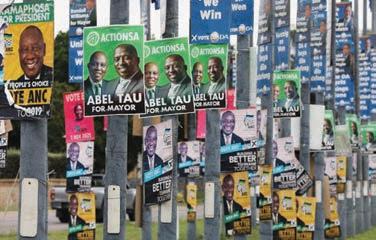
40
OPINION: CO-OPERATION AND
COLLABORATION
When politicians in coalition-governed municipalities play musical chairs with municipal leadership, public respect and confidence in this office dwindles with each passing mayor.
YOUR MUNICIPALITY AT WORK
SERVICE DELIVERY
46 NTABANKULU LOCAL MUNICIPALITY
Rolling out a clean-up campaign in the municipal seat of Tabankulu.
46 CITY OF TSHWANE
Supporting aspiring entrepreneurs with the establishment of a Virtual Entrepreneurship Academy.
CONTENTS ISSUE 42, INSIDE THIS ISSUE
24 38 2 VOICE OF LOCAL GOVERNMENT ISSUE 42
47 CITY OF TSHWANE
The creation of an industrial hub is poised to take a further leap forward with the official launch of the Rosslyn Improvement District (RID).
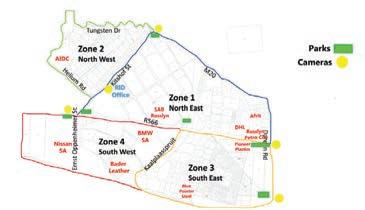
SALGA AT WORK 48 CAPACITY-BUILDING
SALGA’s recent signing of an MoU with the North-West University will help to strengthen the capacity of local government employees and boost institutional capacity on several levels.
50 AUDIT FEEDBACK
SALGA calls on municipalities that received poor audit outcomes to turn around their financial management and governance and replicate the 55 per cent that received acceptable results.



52 THE SIXTH NATIONAL COMMUNICATORS FORUM
SALGA held its National Communicators Forum at the Cape Town ICC on 12–14 April. We share some of the highlights of the event.
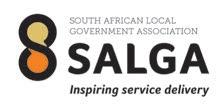
EDITORIAL COMMENTARY
In an age of challenge and opportunities
We’ve just celebrated Youth Day ... 47 years after the 1976 uprising when young South Africans boldly stood up against the evils of the apartheid government. Racist education policies, no opportunities for black youth, rampant violence against black communities and people and a total disregard for freedom.
The uprising changed the trajectory of politics in this country, but almost three decades after the first democratic elections, our country and the youth, in particular, are still yearning for equal opportunities and access to rights so hard fought for.
The majority of our people still live in poverty with limited access to a quality of life many take for granted. The schools still have pit latrines, we still live in shacks with no proper infrastructure such as roads, water and electricity, And now, with the global digital revolution underway, many of our youth and communities are being left behind.
In this issue, we highlight some of the challenges our youth still face, we look at the opportunities for them in the new digital age and we tackle how service delivery can be upended with smart software and innovations.
Raina Julies
Director, Marketing & Communication: Tebogo Mosala
Communication & Marketing Officer: Marelda Boshielo
Marketing Officer: Valerie Setshedi
PICASSO EDITORIAL & PRODUCTION TEAM
Content Manager: Raina Julies, rainaj@picasso.co.za
Contributors: Dr Benadette Aineamani, Lindi Botha, Trevor Crighton, Dale Hes, Susanne Karcher, Denise Mhlanga, Itumeleng Mogaki, Bonolo
Selebano, Tiisetso Tlelima, Lesley Ann van Selm, Rodney Weidemann



Copy Editor: Brenda Bryden
Content Co-ordinator: Natasha Maneveldt
Head of Design: Jayne Macé-Ferguson
Designer: Bulelwa Sotashe
Digital Editor: Stacey Visser
Sales Project Manager: Jerome van der Merwe, jeromem@picasso.co.za
Sales Team: Jacqueline Bezuidenhout, Frank Simons, Natasha Hendriks
Production Editor: Shamiela Brenner
Subscriptions and Distribution:
Fatima Dramat, fatimad@picasso.co.za
Business Manager: Lodewyk van der Walt Lodewykv@picasso.co.za
Management Accountant: Deidre Musha
General Manager, Magazines: Jocelyne Bayer
Published by Picasso Headline, a proud division of Arena Holdings (Pty) Ltd






Hill on Empire, 16 Empire Road (cnr Hillside Road), Parktown, Johannesburg, 2193
Postal Address: PO Box 12500, Mill Street, Cape Town, 8010 www.businessmediamags.co.za


Printing: CTP Printers, Cape Town

Follow and like us to keep up to date with SALGA news.

Copyright: Picasso Headline and SALGA. No portion of this magazine may be reproduced in any form without written consent of the publisher. The publisher is not responsible for unsolicited material. Voice of Local Government is published quarterly by Picasso Headline. The opinions expressed are not necessarily those of SALGA or Picasso Headline. All advertisements/advertorials and promotions have been paid for and therefore do not carry any endorsement by SALGA or the publisher.

National Office Menlyn Corporate Park Block B 175 Corobay Avenue Cnr Garsfontein and Corobay Waterkloof Glen, Ext 1 Pretoria 0001 Tel: 012-369-8000 Fax: 012-369-8001 SALGA Eastern Cape Berea Terrace Of ce Building First Floor, Suite 3 Berea East London 5214 Tel: 043-727-1150 Fax: 043-727-1156/67 SALGA Free State SALGA House 36 McGregor Street East End Bloemfontein 9300 Tel: 051-447-1960 Fax: 051-430-8250 SALGA Gauteng 3rd Floor Braampark Forum 2, 33 Hoofd Street Braamfontein 2017 Tel: 011-276-1150 Fax: 011-276-3636 SALGA KwaZulu-Natal 4th Floor Clifton Place Hurst Grove Musgrave Durban 4001 Tel: 031-817-0000 Fax: 031-817-0034 SALGA Limpopo 127 Marshall Street Polokwane 0699 Tel: 015-291-1400 Fax: 015-291-1414 SALGA Mpumalanga Salga House 11 Van Rensburg Street Nelspruit 1200 Tel: 013-752-1200 Fax: 013-752-5595 SALGA North West 56 William Street Witkoppies Klerksdorp 2571 Tel: 018-462-5290 Fax: 018-462-4662 SALGA Northern Cape Block Two, Montrio Corporate Park, 10 Oliver Road, Monument Heights, Kimberley 8301 Tel: 053-836-7900/8 Fax: 053-833-3828 SALGA Western Cape 7th Floor 44 Strand Street Cape Town 8000 Tel: 021-446-9800 Fax: 021-418-2709
SALGA
46 47 50 ISSUE 42 VOICE OF LOCAL GOVERNMENT 3

All about cholesterol
High cholesterol levels go hand in hand with several other factors that fall under chronic conditions. According to the South African Heart and Stroke Foundation, one in four adults in South Africa has high total cholesterol.
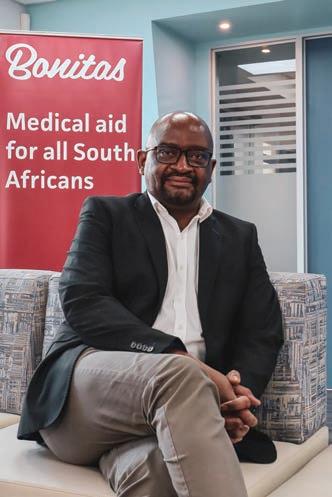
WHAT IS CHOLESTEROL?
Understanding cholesterol, why it is used together with other factors such as lifestyle and medical conditions to estimate your risk of cardiovascular disease and knowing your LDL and HDL numbers, are all important for managing your health.
Cholesterol [kuh·leh·stuh·rol] is a waxy fat-like substance made in the liver and found in the blood and cells of your body. We all have cholesterol, it is made naturally and helps to form cells, hormones, vitamin D and bile acid - which helps us digest food.
Do you know the difference between bad cholesterol (LDL) and good cholesterol (HDL)?
LDL is low-density lipoprotein: it is called the “bad” cholesterol because a high LDL level leads to a buildup of cholesterol in your arteries, which leads to a greater chance of developing a heart disease.
HDL is high-density lipoprotein: it is the “good” cholesterol, it carries cholesterol from other parts of your body back to your liver. Your liver then removes the cholesterol from your body.
If someone has high levels of bad cholesterol, they have too much of this fatty substance in their blood and, over time, this could cause arteries to block and result in a heart attack or stroke.
Unfortunately, unlike most medical conditions, high cholesterol can go unnoticed and often doesn’t present any symptoms unless it’s serious enough to cause problems.
WHAT TEST IS USED TO DETERMINE THE LEVELS OF CHOLESTEROL IN YOUR BODY?
A fasting lipogram measures the exact amount of different types of cholesterol you have.
The consensus is that healthy cholesterol levels should be:
• Total cholesterol: less than 5.0 mmol/l (millimoles per litre).


• LDL cholesterol: less than 3.0 mmol/.
• HDL cholesterol: greater than 2.0 mmol/.
• If your triglycerides (fat stored in the body) are higher than 1.7mmol/l, this is also indicative of a possible cholesterol problem.
There are variables for the optimal LDL (bad cholesterol) count, according to your risk profi le. If you are high risk, your doctor will explain these to you, what they mean and the steps you need to take to reduce your LDL count. Healthy adults should have their cholesterol checked every four to six years. People who have heart disease, diabetes or a family history of high cholesterol need to get their cholesterol checked more often.
DISEASES OR CONDITIONS RELATED TO HIGH CHOLESTEROL LEVELS
Too much “bad” cholesterol in your blood can cause narrowing and blockages of the arteries. In time, this narrowing can lead to a heart attack, while blockages in the arteries of your brain can cause a stroke.
People with high blood pressure (hypertension) and diabetes often have high cholesterol and kidney and liver disease.
LIFESTYLE CHANGES
The medical term for high blood cholesterol is familial hypercholesterolaemia. Although there is no cure, the risk of coronary disease can be reduced with statins that decrease the amount of bad cholesterol your body makes.
The following lifestyle changes can help to lower cholesterol levels.
• Losing weight.
• Eating a heart-healthy diet: focus on plant-based foods, including fruits, vegetables and whole grains.
• Exercising regularly.
• Not smoking.
And remember, your GP should be your fi rst port of call for all your healthcare needs. We believe there needs to be co-ordination of care and encourage you to see your GP, who can refer you to a specialist or auxiliary provider as and if the need arises.
For more information: 0860 002 108 www.bonitas.co.za @BonitasMedical

IMAGE: SUPPLIED
DR MORGAN MKHATSHWA, clinical executive at Bonitas Medical Fund, takes a look at cholesterol
Scan this QR code to go directly to the Bonitas website.
High cholesterol can go unnoticed and often doesn’t present any symptoms.
ISSUE 42 VOICE OF LOCAL GOVERNMENT 5 ADVERTORIAL | BONITAS MEDICAL FUND
Dr Morgan Mkhatshwa
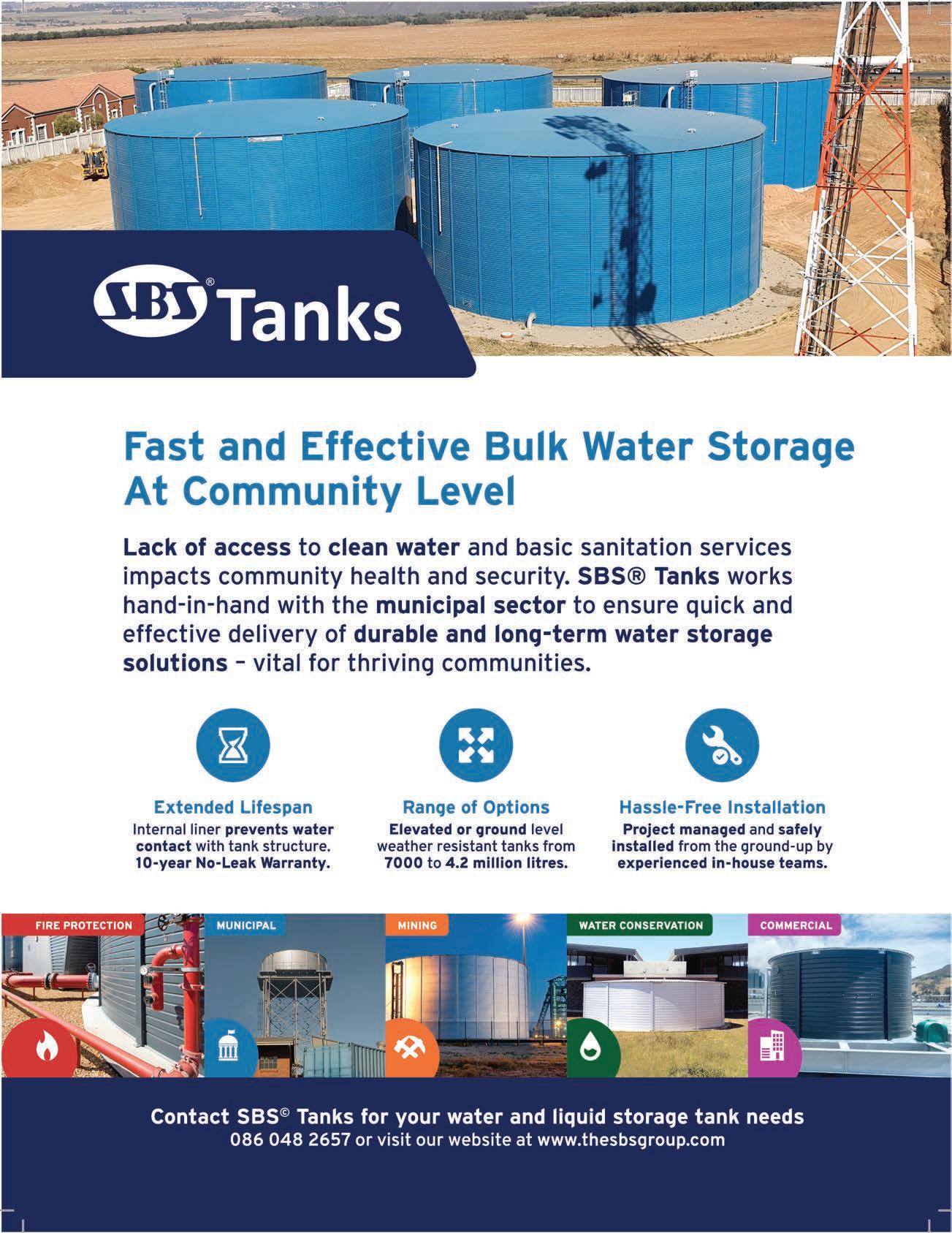
Helping municipalities to meet water supply commitments
SBS Tanks® recognises the challenges faced by the municipal sector to deliver equitable access to water and sanitation services to South African citizens and offers a range of storage solutions
Municipalities that service and support rural communities are typically the most severely impacted when it comes to water delivery, given the vast distances between dwellings and water sources, rugged terrain and budgetary constraints due to a limited revenue base.
According to StatsSA’s The World at 8 billion report, the current population of 60.86 million people in South Africa is expected to grow to 70 million by 2035. Currently, 19 per cent of citizens living in rural communities lack access to reliable water supply and 33 per cent to basic sanitation services. Innovative solutions are required to expedite the equitable delivery of water and sanitation services to citizens and meet the targets set out in the National Development Plan (NDP) and in the Sustainable Development Goals.
Working with municipal and consulting engineers, provincial and regional municipal managers, SBS Tanks® has developed a wide range of water storage tank solutions to assist municipalities with water and sanitation delivery services – no matter the
location or the storage capacity required. Comprising modular steel panels, fitted with an internal liner and installed without heavy-duty equipment from the ground up, SBS tanks can be used to store several liquids from raw seawater, borehole or river water and clean potable (drinking) water to effluent or process water.
MODULAR, LIGHTWEIGHT, WEATHER-RESISTANT AND EASY TO TRANSPORT AND INSTALL
With an expected lifespan of over 65 years and a 10-year No-Leak warranty, SBS tanks can be elevated to deliver increased water pressure and ensure the safe storage of potable water or built within days on ground level and commissioned immediately. While lack of road infrastructure may impact the construction of concrete bulk water storage reservoirs, delaying the delivery of life-giving water to communities and schools, SBS tanks have been engineer-designed to be modular and lightweight, allowing for ease of transport and quick installation without
compromising structural integrity and still offering excellent wind rating and weather resistance.
Utilising vertical or horizontal space, SBS tanks can deliver bulk water storage capacities, offering municipal teams the added benefit of ensuring continued water supply to communities during routine pipework maintenance.
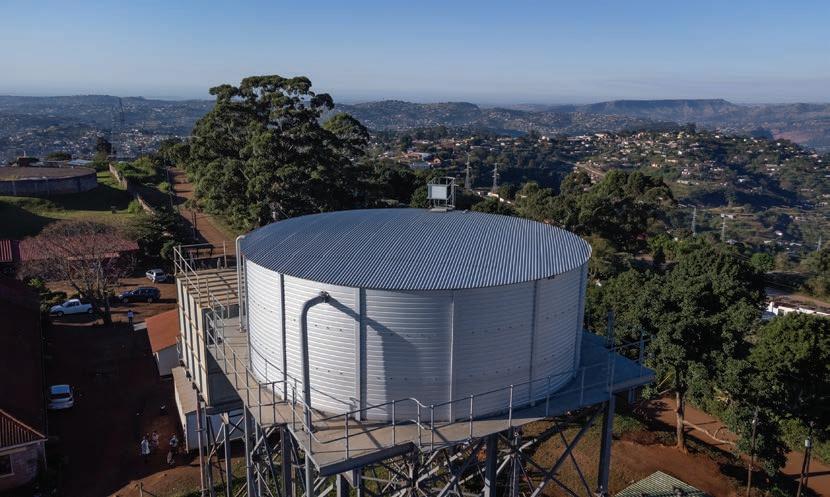
For more than 25 years. SBS Tanks® has delivered safe drinking water storage to municipalities, residential housing complexes, mines and commercial businesses across the globe. As a #ProudlySouth African company, we are proud of our offering of over 500 tank sizes across our weather-resistant ranges from elevated, econo, standard and cyclonic to specialised engineered tanks, agricultural and domestic tank solutions.
ABOUT SBS TANKS ®


SBS Tanks ® is a leading provider of innovative water storage tanks that are compliant with the highest internationally recognised quality standards: ISO 9001:2015 and ISO 45001:2018. Established over 25 years ago, the company has offi ces across South Africa, East and West Africa and the United States of America, and works with an extensive dealer network across the globe.




Employing professionals in the engineering, project management, logistics and business development space, SBS Tanks ® has an in-depth understanding of the compliance requirements, international logistics and regional challenges faced in delivering a world-class product anywhere in the world. SBS Tanks ® is proud to collaborate with private investment partners the Wellspring Group.
Lack of access to water and basic sanitation services impacts the quality of life, education and community health, increasing the risk of disease and reducing food security and job opportunities. With a wide range of durable water storage tank options available to meet the needs of rural and urban communities, SBS Tanks® is ready to assist the municipal sector to deliver – no matter the size or location of the project.
For more information:
086 048 2657 www.thesbsgroup.com

IMAGE: SUPPLIED
Scan this QR code to go directly to the SBS Tanks® website.
ISSUE 42 VOICE OF LOCAL GOVERNMENT 7 ADVERTORIAL | SBS TANKS®
4IR: Opportunities and Threats
SALGA remains the key local government interface for providing critical support to South Africa’s many municipalities and driving home an agenda focused on delivery to meet the needs of citizens and communities countrywide.
With this focus in mind and as we seek to overcome the multiple challenges facing our nation, two crucial standout areas remain: employment and the rise of the fourth industrial revolution (4IR).
We must ask ourselves if South Africa’s digital skills development programme is meeting the needs of a digital revolution. Importantly, we must ensure our youth are integrated into such development programmes. More needs to be done to provide access to 4IR knowledge and skills at school, tertiary and even job entry level. Preparing the youth for a digital future can only boost their employment chances.
Of course, the 4IR also offers enormous opportunities for local government to improve service delivery significantly. Therefore, adopting agile and innovative digital technologies in municipalities is critical.
This is no simple matter; to enable effective local government service delivery solutions, we have to make sure that those municipalities implementing these tools have employees who are literate in this type of technology, and these entities also need to ensure the requisite levels of cybersecurity.

To this end, it is necessary to delve more deeply into issues such as cyber-resilience and threat intelligence for local government. SALGA will certainly not shirk its role in helping municipalities to transition to the digital integration of services.
SERVICE DELIVERY INITIATIVES
Looking into current service delivery efforts, SALGA is excited about the efforts made by the Ntabankulu Local Municipality in partnership with the National Department of Forestry Fisheries and the Environment, Provincial Department of Economic Development, Environmental Affairs and Tourism and Ntabankulu Taxi Association. These entities joined forces to create the Clean Up Campaign initiated in the town – a great example of how collaboration and unity between numerous stakeholders can improve the lives of the people.
In the City of Tshwane, a partnership with the StartUp Tribe organisation has established a Virtual Entrepreneurship Academy, while the municipality has also launched what it calls the Rosslyn Improvement District.
Meanwhile, in a nod to the growing digital world, the iLembe region is playing an increasingly important role in the waste electrical and electronic equipment (WEEE) recycling industry. Several WEEE or e-waste recycling companies with national footprints are based in the area. This is increasing the region and the country’s ability to recover and treat e-waste.
COALITIONS AND CITIES’ MANAGEMENT
One of the bigger ongoing stories recently has been the impact of coalition governments in the municipal space. With a deep dive into the ins and outs of coalitions in this issue, we attempt to answer key questions, such as are smaller parties the real winner and do such groupings mean the electorate ultimately loses?
We also attempt to understand the best ways to ensure that coalition governments work for all, the impact coalition politicking is having on service delivery in the metro of Johannesburg, and a consideration of how best to obtain true transparency in the creation of these coalition governments.
SALGA is also a member of the United Cities and Local Government (UCLG) Africa organisation, so it is worth taking an African perspective on issues around city management.
SALGA understands that to achieve sustainable resilience and inclusiveness, Africa’s cities need to develop the confidence to innovate with local flair. While we recognise the commonalities all Africa’s megacities share – demographic pressures, climate change issues, infrastructure renewal problems, fighting crime, and more – we are aware that each one is unique.
As African megacities have their own history, character and individual journey that sets them apart from others, we must keep such unique characteristics in mind. In this way, local governments across the continent can devise customised homegrown solutions to the challenges they face.
In closing, I share two pieces of good news: first, SALGA Gauteng has launched the Municipal Audit Awards, designed to recognise excellence and encourage improvements in financial management and compliance with the Municipal Finance Management Act across the province’s eleven municipalities. Second, SALGA has launched a children’s book on local government designed to inculcate and promote responsible citizenry across all age groups.
IMAGE: SUPPLIED
SALGA acting CEO MTHOBELI KOLISA discusses the adoption of digital technologies in municipalities
8 VOICE OF LOCAL GOVERNMENT I SS UE 42 CEO’S FOREWORD
Mthobeli Kolisa
IN BRIEF
Municipal Infrastructure Support Agent
Through the Municipal Infrastructure Support Agent, the Department of Cooperative Governance and Traditional Affairs will continue to support 14 municipalities with the alignment of the social labour plans and their integrated development planning to improve the implementation and
financing of municipal infrastructure programmes. The 14 municipalities are Elias Motsoaledi, Lephalale, Mogale City, Merafong Randwest City, Rustenburg, Moses Kotane, Madibeng, Matlosana, Emalahleni, Steve Tshwete, Matjhabeng, Ga-Segonyana, and Gamagara.
R121.7 -BILLION
Department of Cooperative Governance and Traditional Affairs’ approved budget allocation for the 2023/24 financial year.
WATCH
The Chaire ETI is one of the founding partners of the Global Observatory of #sustainableproximities. Why are they joining this initiative, and how will they contribute? Listen to this interview with executive director Catherine Arod-Gall to fi nd out. For more info, visit www.sustainableproximities.org
African Elections
Here are the upcoming elections. The exact dates are liable to change.
• 16 July 2023: Central African Republic – local.
• 23 August 2023: Zimbabwe –President, Senate, House of Assembly and local.
• 2 September 2023: Côte d’Ivoire –local and regional.
DID YOU KNOW?
The Universal Declaration of Human Rights (UDHR) is a foundational blueprint for taking concrete action to stand up for human rights and tackle pressing global issues today. The 75 th anniversary of the UDHR (Human Rights 75) will be celebrated on 10 December 2023.
Road upgrade in Port Shepstone
Considered the economic hub of the KwaZulu-Natal South Coast, Port Shepstone is set for a revival with the recent announcement that Marine Drive (the P395) will get a R11-million upgrade. The upgrade has also improved the region’s accessibility, thereby increasing prospects for local businesses and facilitating investment opportunities from outside the region.
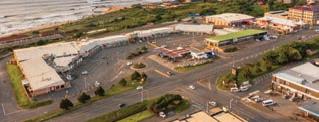
To find out more about KwaZulu-Natal South Coast investment opportunities, visit www.investkznsouthcoast.co.za

Book Launch
Creating responsible citizenry
The first in a series of books to encourage a better understanding of local government, My Local Government, is targeted at children aged 9 to 12. It focuses on giving young readers a better understanding of the different spheres of government and the laws that govern their communities, so that they walk away knowing how to hold their leaders and communities accountable for basic services that affect their daily lives.
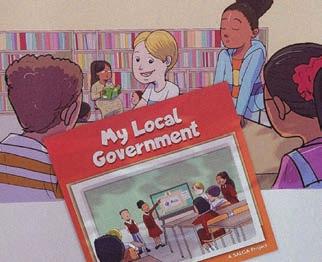
This book is one of many interventions that SALGA believes will enable children, who are the country’s future leaders, to become active and engaged citizens and change the future landscape of public participation.
Key learnings from the book
1. Know your municipal and government processes.
2. The importance of being an active, responsible and engaged citizen.
3. Respect and protect municipal infrastructure.
4. Know the difference between destructive protests and progressive protests. The book will be available at national libraries and online.
DID YOU KNOW?
South Africans remain the most unemployed population across the globe, according to Statistics South Africa, which recently revealed that unemployment rose to 32.9 per cent in the first three months of 2023 from 32.7 per cent in the final quarter of last year.
IMAGE:
SUPPLIED
ISSUE 42 VOICE OF LOCAL GOVERNMENT 9 CURRENT AFFAIRS
South Africa’s WEEE policy development journey
The past few years in South Africa have been marked by breakthrough legislative changes in the waste management sector. The enforcement of Section 18 of the NEM:WA (59 of 1998) in November 2021 introduced extended producer responsibility (EPR) regulations to producers for a range of very different product categories placed on the South African market.
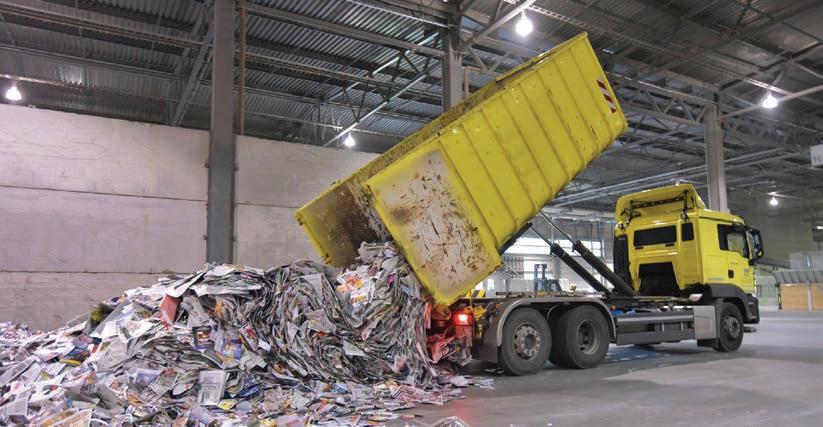
These imported or locally produced goods and materials include paper and packaging, lighting equipment, waste electronic and electrical equipment (WEEE) and, more lately, oils, portable batteries and even pesticides. While seemingly there are few similarities between these products and materials, they all have the potential to end up as problematic waste types at the end of their useful life if not regulated separately so that their recovery, take back and treatment is somewhat guaranteed.
In addition to the introduction of the EPR regulation, WEEE as well as lighting waste (the latter as early as 2016), were also declared as “undesirables” in South African landfills and subsequently banned for landfill disposal – a fact that is still widely unknown and/or simply disregarded, given limited feasible alternatives to handle problematic fractions alternatively.
WEEE POLICY FRAMEWORK AND LEGISLATION IN PROGRESS
What South Africa has been lacking to date, though, is a “home” for all WEEE-related legislation, bylaw components and development strategies already in existence and going forward. And this
SUSANNE KARCHER, national project manager: SRI Phase II, asks what we can learn from other policy-driven extended producer responsibility waste from electronic and electrical equipment management systems globally
“home” is currently being established in the form of an overarching WEEE policy framework for South Africa. The WEEE policy is due to be completed and then put out for public comment by the end of 2023. Another piece of important future WEEE management legislation is currently also being crafted in the form of minimum requirement-based norms and standards for all WEEE operators and/or their facilities in the South African WEEE management chain. This is due to be completed in early 2024.
While both the national WEEE policy and closely related norms and standards are currently “work in progress”, a baseline report, documenting the South African policy development process was completed by the SRI team in March 2023 and subsequently published on the SRI website. Not only does it provide deep insight into the current South African policy development process, but it also compares the applied methodology and envisaged outcomes to international policy development strategies.
The key motivation for compiling the baseline document has been two-fold. First, to plot step-by-step the assumed WEEE policy development journey for South Africa within the existing socioeconomic and legal landscape. This includes describing the key status quo elements that all directly inform the overall policy aim, objectives and the envisaged outcomes captured in the study:
• Current South Africa WEEE generation trends and management practices;
• Key stakeholders and their roles and responsibilities;
• International and national laws applicable; and
• Local economic growth strategies governing aspects of WEEE management.
Second, a review of international approaches to policy development and a comparative analysis of WEEE policies and strategies was done based on generic evaluation criteria. This offers a comprehensive summary of high-level recommendations and findings useful for any country, municipality or even organisation seeking to institutionalise a WEEE policy.
RESOURCES:
If you/your organisation want to be registered as an “Interested and Affected Party” (I&AP) to be able to contribute to the ongoing national WEEE policy development process and/or the establishment of WEEE operator/facility-based norms and standards for South Africa, please do not hesitate to get in touch with the SRI national co-ordinator, Susanne Karcher, at envirosense@xsinet.co.za

SUSTAINABLE RECYCLING INDUSTRIES
The Sustainable Recycling Industries (SRI) programme is a global programme that seeks to build capacity for sustainable WEEE recycling in developing nations. Phase II of the SRI programme is currently being implemented in South Africa until mid-2025 and also runs in parallel in four other countries, namely Peru, Columbia, Egypt and Ghana. SRI is funded by the Swiss State Secretariat of Economic Affairs (SECO) and jointly implemented by the Swiss Federal Laboratories for Materials Science and Technology (Empa) and the World Resources Forum (WRF).
IMAGE: SUPPLIED
WEEE POLICY DEVELOPMENT BASELINE STUDY
GET INVOLVED
POLICY MATTERS: WASTE MANAGEMENT
10 VOICE OF LOCAL GOVERNMENT ISSUE 42
Global platform to support proximity approaches to urban planning
The second session of the United Nations Habitat Assembly opened in Nairobi, Kenya, with a call for sustainable urban development and effective multilateralism to create more livable, sustainable and resilient cities
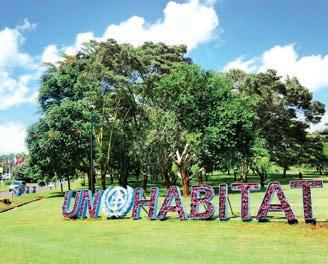
The Global Observatory of Sustainable Proximities was launched at the second United Nations Habitat Assembly to support the implementation of proximity approaches in cities worldwide. The Global Observatory of Sustainable Proximities will serve as a go-to knowledge platform, collecting information about local initiatives while supporting and promoting urban proximities at a global scale.
Urban development based on proximity – or the idea that urban dwellers should be able to meet essential needs without venturing far away from home – has proven to promote social, economic and environmental sustainability. Through the Observatory, major global urban actors join forces by placing the theme of proximity at the heart of urban strategies. The four founding partners – the Entrepreneurship, Technology and Innovation Chair of the IAE Paris Sorbonne Business School (Chaire ETI), C40 Cities, United Cities and Local Governments (UCLG) and the United Nations Human Settlements Programme (UN-Habitat) – are jointly leading the work to fulfil these objectives.
CRA NEW SUSTAINABLE MODEL FOR CITY PLANNING
“This global initiative allows us to drive large-scale change by informing urban strategies in cities worldwide that contribute to building local ecologic, economic and social value creation,” says Chaire ETI Professor Carlos Moreno. The Observatory partners will develop a globally applicable concept based on proximity, official measures and indicators, a global centre for knowledge sharing and capacity building, a global network to support implementation in cities and
ABOUT UN-HABITAT
The United Nations Human Settlements Programme (UN-Habitat) is mandated by the UN General Assembly to promote socially and environmentally sustainable towns and cities. UN-Habitat is the focal point for all urbanisation and human settlement matters within the UN system.
UN-Habitat works with partners to build inclusive, safe and sustainable cities and communities. It promotes urbanisation as a positive transformative force for people and communities, reducing inequality, discrimination and poverty.
UN-Habitat works in over 90 countries promoting transformative change in cities and human settlements through knowledge, policy advice, technical assistance and collaborative action.
around proximity in urban planning have been shaped over the past century by several thought leaders and gained renewed attention in recent years after Professor Moreno popularised the idea of a “15-minute city” that allows urban dwellers to meet most of their daily needs within a short walk or bike ride from home. It has inspired action in diverse urban contexts around the globe, from Paris’ “La ville d’un quart d’heure”, to Shanghai’s “15-minute community life circles”, Bogota’s “Barrios Vitales”, or Glasgow’s “Livable Neighbourhood” approach.
“At a time when the combined effects of the environmental crisis, sociospatial inequalities between and within countries and acute political tensions and polarisation are increasingly impacting human lives, urban proximities offer a new sustainable model for caring for the wellbeing of communities,” says UCLG secretary-general Emilia Saiz.
By placing people at the centre of the urban plan, this concept focuses on ensuring an equitable distribution of all essential social functions of the city. As C40 executive director Mark Watts puts it: “The sustainable city is designed around the needs of people, rather than cars, and is planned with mixed and shared-use spaces in mind.”
RESOURCES:

boost international scientific research in related fields.
UN-Habitat deputy executive director Michal Mlynár says: “Through the Observatory, we aim to establish a global network of urban actors to join forces in placing the theme of proximity at the heart of urban strategies.” Ideas
GLOBAL OBSERVATORY OF SUSTAINABLE PROXIMITIES
UCLG UPDATES IMAGE: SUPPLIED
ISSUE 42 VOICE OF LOCAL GOVERNMENT 11
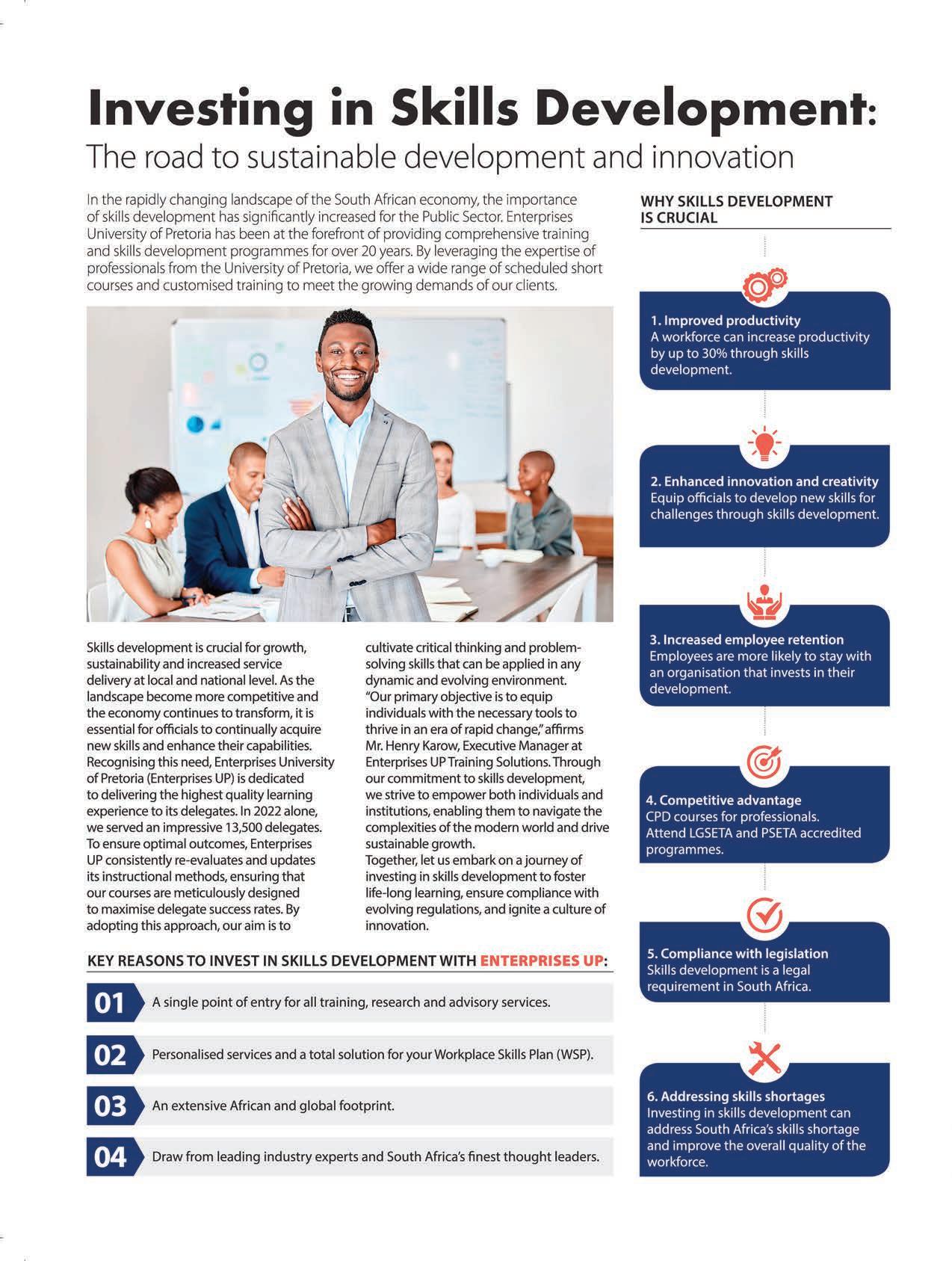
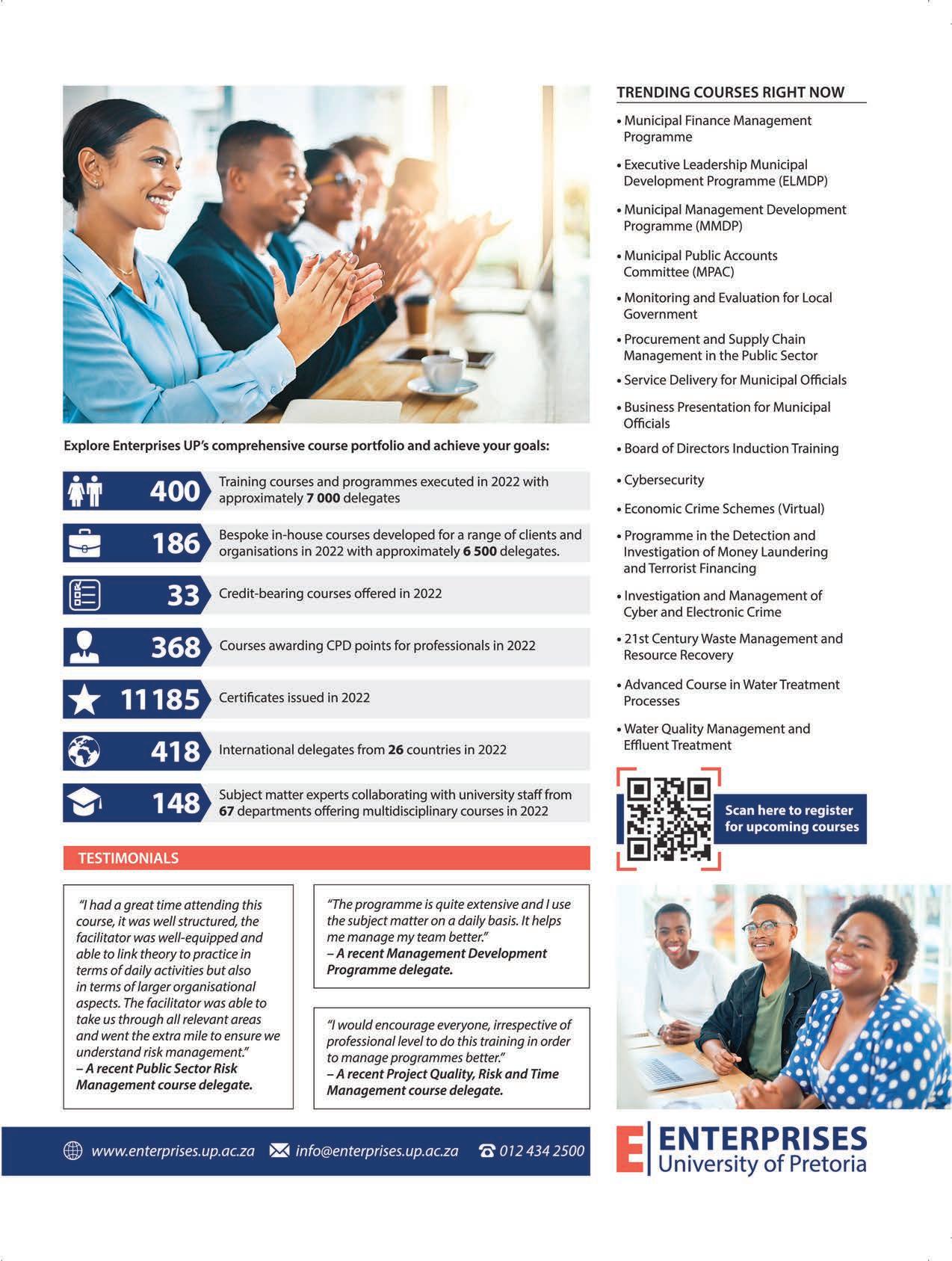
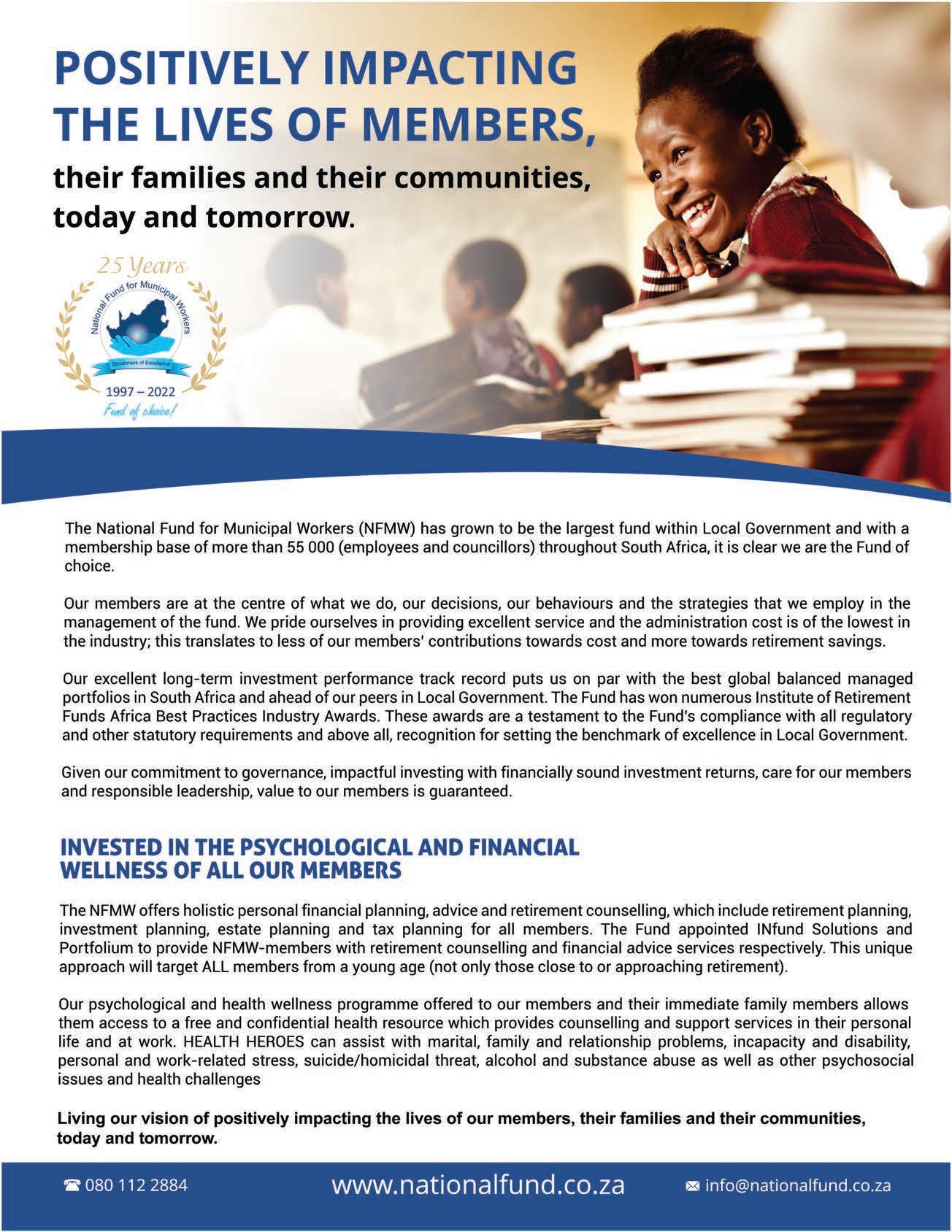
YOUTH MONTH PERSPECTIVE
South Africa’s supply of graduate labour is growing faster than the economy can absorb them. This was expressed by the Human Sciences Research Council (HSRC) during a meeting with the Portfolio Committee on Higher Education, Science and Innovation at the start of Youth Month this year.

The committee was briefed by the Department of Science and Technology, the HSRC and the National Youth Development Agency (NYDA) on their internship programmes and Presidential Youth Employment Initiatives.
The HSRC said the unemployment rate of graduates aged 15–24 was much higher than that of graduates 25–34. The committee heard there is a strong correlation between a young person’s level of education and the opportunities they can access.
Waseem Carrim, CEO at the NYDA,
IN THE SPOTLIGHT
INSIDE: 18 YOUTH MONTH
28 DIGITAL TRANSFORMATION
38 COALITION GOVERNMENTS
says: “Every year at least one million young people leave school in South Africa, where 28 per cent enter post-schooling education, another 15 per cent find work while the remaining 57 per cent sit outside the labour market.”
The department and HRSC said their joint internship programmes are aimed at providing work experience for unemployed graduates through placement in relevant institutions. The department said it was working on improving existing initiatives, such as developing an electronic system to track young people as they seek out opportunities in the knowledge economy.
The NYDA said it understood the difficulties industries have in attracting talent while there is an oversupply of young people looking for work. The NYDA further called for disabled youths to be included in internship programmes.
Shirin Motala, director for impact and research development at the HSRC, said a lack of relevant work experience, limited social capital and insufficient information for job searching compounds the problem of youth unemployment. The department said internship programmes are aimed at increasing the pool of capable human resources for the public sector, sciences councils and the industry as a whole.
Members of the Higher Education committee unanimously expressed their concerns about the sustainability and impact of the public employment initiatives across government departments, and called for retention strategies for youth employment beyond six months or a year.
Source: Parliament.gov.za
I SS UE 42 VOICE OF LOCAL GOVERNMENT 15

Meet SA’s youngest councillor




Councillor Carl Steenekamp (22), elected as South Africa’s youngest councillor in the municipal elections of 2021 at the age of 20, was driven by a strong desire to see his local council filled with people who care about their communities. This value is one that he not only brought into council, but also uses to guide his day-to-day activities as a councillor.


“I became involved with my political party, the Democratic Alliance (DA), even before I was eligible to vote because I was motivated to address the deterioration I witnessed in my municipality, Merafong. I recognised the immense potential of the area and desired to bring about positive change in the lives of community members,” he says.
“I actively engaged in various initiatives, such as organising clean-up campaigns, to encourage others to join and contribute to the solution. I firmly believe in the power of active citizenship and realised that the most effective way to persuade others was by leading by example and actively participating myself,” Steenekamp explains.
YOUTH PARTICIPATION IN LOCAL GOVERNMENT
Following the municipal elections in 2021, 2 969 of the 9 473 elected councillors – Steenekamp being the youngest – were between the ages of 20 and 39. Involving young people in municipal decision-making processes is essential to fostering an inclusive society where everyone’s voice is heard because young people (18–34 years) make up nearly a third of South Africa’s population.
“Ageist stereotypes that undermine the interest of young people in public affairs, and the view that young people are not interested in public affairs are misguided and fail to recognise our passion and commitment. Many young people are disillusioned, but that does not mean we are not interested,” says Steenekamp.
He is adamant that everyone, including young people, has skills, knowledge and experiences that can equally contribute to the municipal decision-making process.
“By actively involving young people, we can foster positive change within communities and enhance the political landscape as a whole. Embracing youth in politics enriches the decision-making process, encourages innovative thinking and ensures the voices of all generations are heard and valued,” says Steenekamp.
LEADERSHIP
In addition to his role as a Merafong Local Municipality council member, Steenekamp has responsibility for the operations of his political party, the DA. Steenekamp was appointed to represent the DA in council as the Chief Whip in December 2022.



“Managing colleagues older than me in my senior position requires a foundation of mutual respect. Ultimately, establishing a culture of mutual respect and understanding allows us to work together effectively, regardless of age differences,” he explains.



Steenekamp is an advocate for bridging the gap between citizens and their municipalities using technology, including social media. He says this allows for more widespread public engagement, especially on issues that affect communities.
“Using various digital tools, I have established regular communication channels to keep my ward informed about council activities and the initiatives I am undertaking to enhance our community. This has not only improved transparency, but also encouraged active participation from residents,” he explains.
“I am particularly proud of mobilising and involving many residents in efforts to protect local infrastructure and minimise power outages through a ward maintenance initiative. By harnessing the power of digital platforms, we have fostered a sense of unity and empowered the community to take ownership of our shared resources. It is gratifying to witness the positive impact we have achieved together.”
WORK-LIFE BALANCE IS ESSENTIAL
For Steenekamp, finding a balance between the demands of his career and his personal life requires that he intentionally manages his time between work and other aspects of his life.



include concludes.

































“Some of my favourite hobbies include hiking, rowing, jogging, reading and spending time with close friends. I like spending time doing those hobbies in nature as well – for tranquillity and clearing my mind,” he concludes.




RESOURCES:
Follow hashtag: #InspiringServiceDelivery, #Kasi2Kasi #Asisho! #LetsSayIt #LocalGovTodayEveryday








YOUTH MONTH IMAGE: SUPPLIED
GET INVOLVED
South Africa’s youngest councillor, Merafong Local Municipality Councillor Carl Steenekamp, believes in the power of active citizenship
ISSUE 42 VOICE OF LOCAL GOVERNMENT 17 equally
PROFILE:
Carl Steenekamp
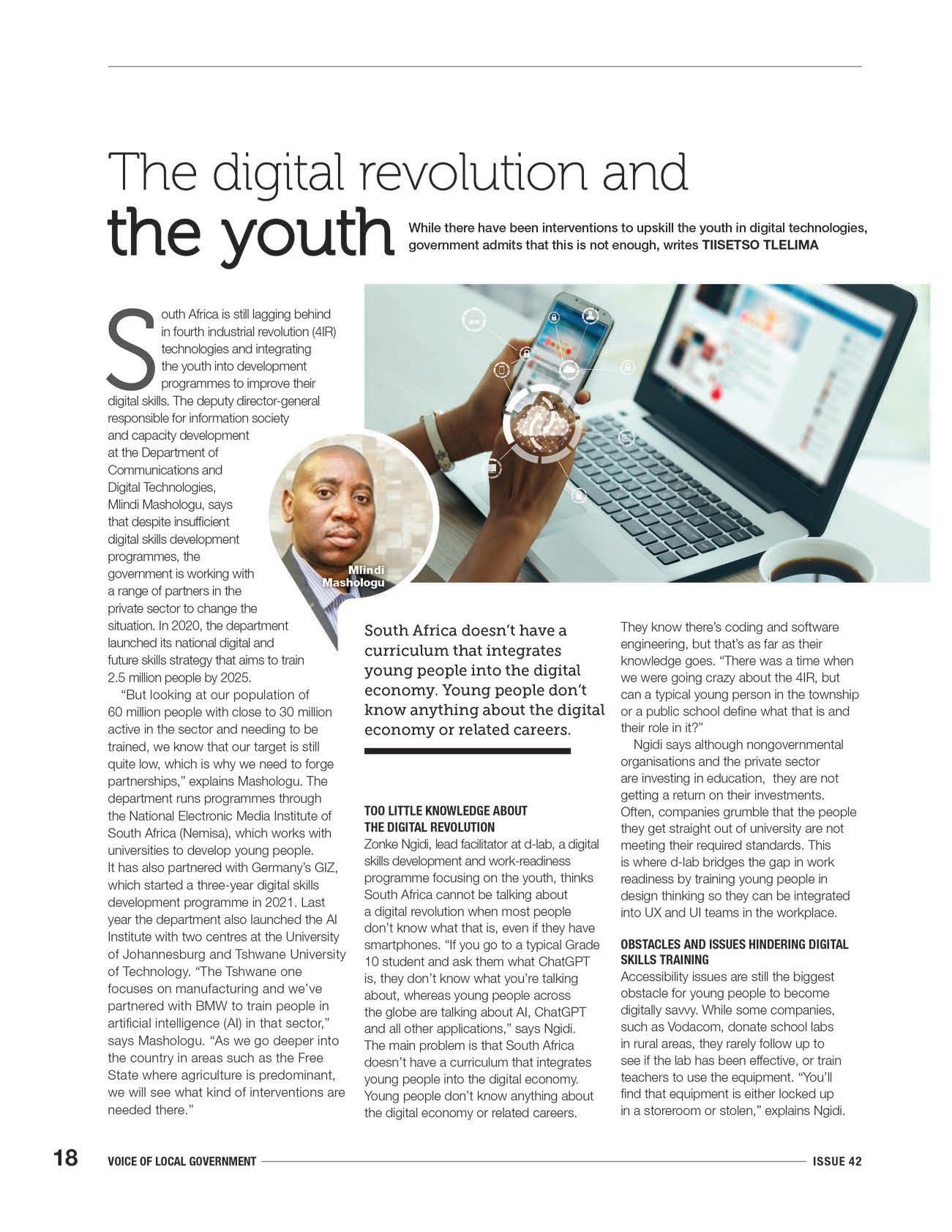
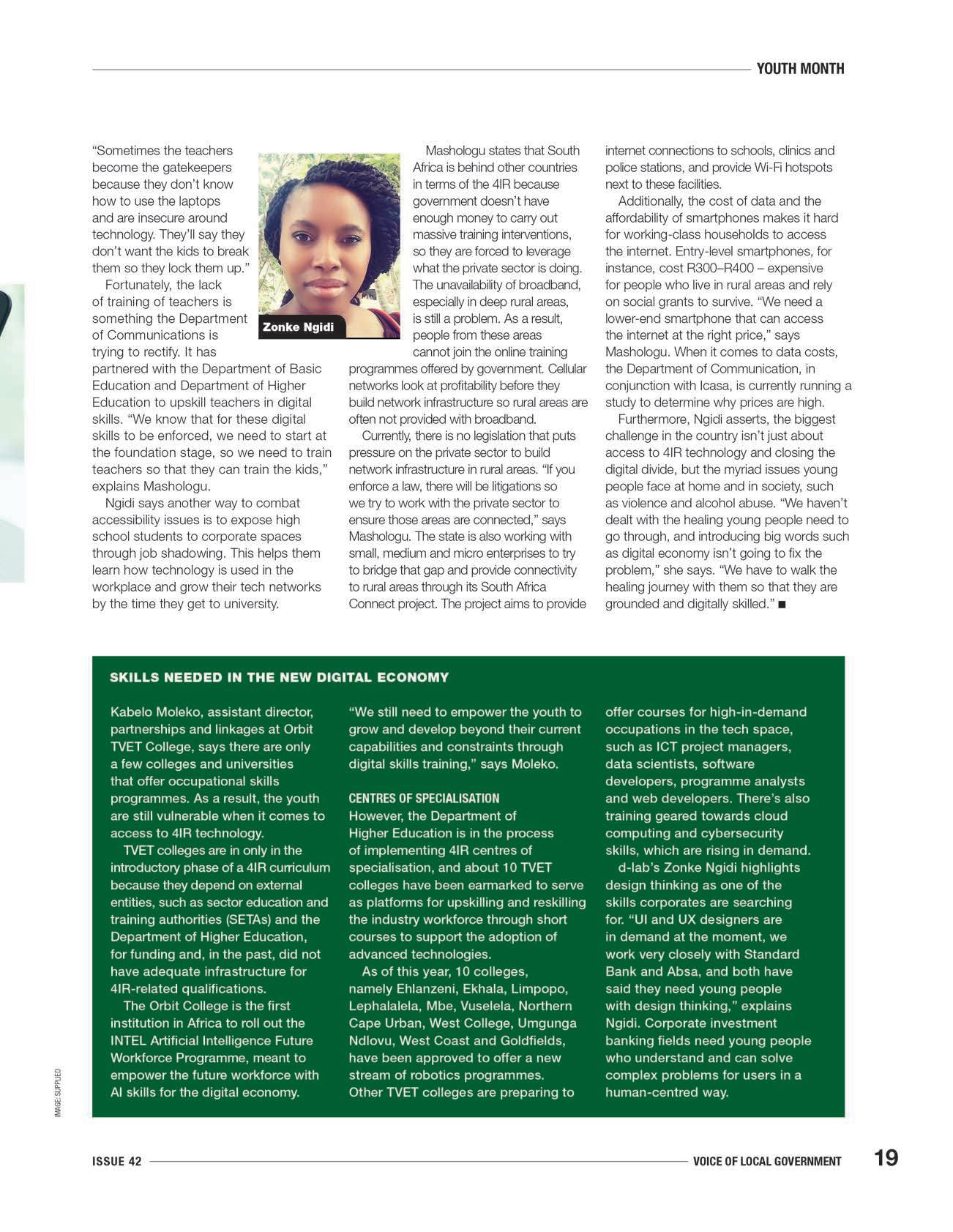
Social Connection Matters
Research on and consultations done with young people by Youth Capital show us that social connections create a multilayered safety net that not only supports the youth, but also helps them rise. As each of us journeys to our first quality job and a sustainable livelihood, we inevitably mobilise our social networks for access, information, support and opportunity. Just as job-seekers use connections to find employers, employers use connections to find candidates. In South Africa, employers often rely on professional networks and past employees to find the right person for the job.
In the early 1990s, for example, a researcher found two specific dairies in Port Elizabeth and Cape Town that had employed the majority of their workers from one village in rural Ciskei. One migrant worker had referred another and so the chain went on, with family members and neighbours all working at a factory hundreds of kilometres away from their homes.
Youth Capital’s #StandOut campaign unpacks why economic growth alone will not shift young people’s realities
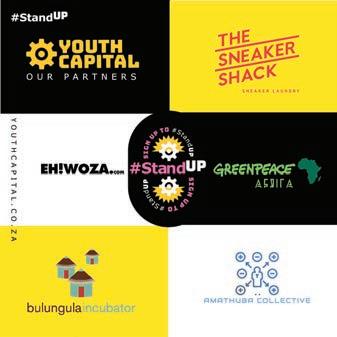
In many places in South Africa today, this principle remains the same: people are referred for jobs by somebody they know – someone who often already has a relationship with the employer. Without these connections, getting a foot in the door can be difficult.
WHY SOCIAL CONNECTION MATTERS

Young people tell us that social connections matter, but many in South Africa don’t have them. This is part of the reason that two in ten young people (aged 24–35) are without work.
Living with someone who is employed can create access to productive social networks. But 42 per cent of South Africa’s young people (aged 15–24) live in households with no employed adult. Without close ties to someone in their circles who is formally employed, many youth are cut off from social networks that can give them information about or access to the labour market.
With fewer financial resources, these young people also find it more difficult
to build these connections on their own. More than half of 15–24-year-olds live in households with a per capita monthly income of less than R779.10. They cannot afford the high costs of mobile data or internet cafes, which would allow them to search for jobs or education opportunities, or build digital communities.
Research tells us that, when confronted with the high costs of job-seeking, seven out of ten young people borrow money from their relatives to look for work. Thus, without relatives to borrow from, those in poorer households are even more stuck.
This is why participants in Youth Capital’s consultations so often defined social assets as the ability to mobilise resources (ukuba nezinto). As one participant said: “The kind of home you come from and your background affect your ability to find opportunities.”
The proportion of young people living in a home where no one is employed increases to almost 60 per cent in the Eastern Cape and Limpopo provinces, and to as much as 80 per cent in some of the poorest municipalities of the country. It’s no wonder that so many of the young people who spoke to Youth Capital describe “where you live” and “where you come from” as critical factors in how connected they are and whether they are able to leverage those connections for productive opportunities.
Those living outside major metros, for example, often find themselves at a disadvantage in the job search. Because of the power of social status and positioning in determining job prospects, some researchers describe the South
20 VOICE OF LOCAL GOVERNMENT I SSUE 42
African labour market as consisting of two groups: a well-connected group of “insiders” and a much larger group of “outsiders”, whose limited connections to those who are wealthy and working keep them trapped in unemployment, or in low-paid, insecure or unskilled work.
While social connections can create webs of inclusion that grow young people’s circles, link them to opportunities and resources, and keep them from falling through the cracks, they can also exclude young people, privileging the “insiders” and leaving the “outsiders” trapped on the margins.
In South Africa, exclusive social networks have historically reproduced lines of privilege, connecting young, mainly white South Africans not only to opportunity, but also to intricate knowledge of the economy from an early age.
BUILDING SOCIAL CONNECTIONS WITHOUT EXCLUSION
Each of us has many types of social connections. To start, we have our inner circle of close friends and family. These are usually the strongest and longest-lasting of our relationships. Researchers often refer to them as bonding ties; we can think of these as the foundation for strong attachments to people who play a critical role in our lives. If young people have close circles that are connected to information, resources or industry, this can create powerful opportunities.
Young people know the importance of building close ties with trusted adults who can help them discover and navigate education and job opportunities and learn
ABOUT YOUTH CAPITAL

Youth Capital is an advocacy campaign with a mission to drive youth-centred, evidence-based and collective action towards tackling the systemic challenges behind youth unemployment in South Africa. Its action plan combines data with young people’s experiences to shift gears on youth employment.
the hidden rules of the working world. For some, this adult might be a family member, but for others, adult mentors may come in the form of teachers, neighbours or supervisors. Many of the young people who spoke to Youth Capital described these adult mentors as being “like relatives”, in the sense that these were strong bonds with people they could trust. One participant said: “My teacher, he was like an uncle to me, he offered me an application to a scholarship.”
Bonding ties with close friends, family or community members are often our most accessible social resources. However, to become thriving individuals, we also need connections that go beyond our inner circle. Bridging ties connect young people to relationships, resources and knowledge outside their immediate circles. You can think of these ties as a structure that helps young people rise above their circumstances.
Building bridging ties is especially challenging for those from poorer households, particularly those in rural areas with fewer links to centres of social or economic power.
ERODING THE DIVIDES
According to a 2022 study by Opportunity Insights, Social Capital Atlas (the largest study of its kind), one of the most powerful predictors of whether a child escapes poverty in the United States is how many well-off people they know.
Cross-class friendships were found to be more powerful in predicting children’s upward mobility than the quality of their schooling, their family structure or the availability of jobs. In other words, by building relationships across social and economic divides, we can start to erode the divides themselves. This is critical in South Africa, where 10 per cent of the country holds 80 per cent of the wealth, and inequality runs along stark lines of race, gender and geography.
Young people need these sorts of relationships to make themselves visible. Research shows that this visibility can come from something as simple as a reference letter that speaks to the attitudes and aptitudes of a young person. Many young people also see social media, including LinkedIn and Facebook, as a way to make themselves visible to audiences, customers, collaborators and prospective employers beyond their immediate environment.
Unemployment is rooted in a wide variety of systemic roadblocks that young people face on their road to creating sustainable livelihoods. The reality is that we can’t wait for someone else to fi x this situation. The government, private sector, civil society and young South Africans must work together to grow and deepen social support for young people, and strengthen their connections to the world of work.
As part of its calls to action, Youth Capital, along with its network of youth and organisations, is advocating that we collectively grow young people’s circles, as a way to shift systems of exclusion and draw them closer to opportunity.
Evidence shows that when young people lack personal connections to grow their circles, local nongovernmental organisations as well as youth organisations can provide the kind of mentoring and bridging capital that are often missing for youth from lower-income households.

IMAGE: SUPPLIED
RESOURCES: JOIN #STANDUP
ISSUE 42 VOICE OF LOCAL GOVERNMENT 21 YOUTH MONTH
By building relationships across social and economic divides, we can start to erode the divides themselves.
Can renewable energy positively impact youth unemployment?
A whole new sector is rising on the back of the electricity crisis, offering hope for unemployed youth, but upskilling them is more complex than you might think, writes
RODNEY WEIDEMANN
South Africa has a major unemployment problem, with the youth suffering the most. At the same time, the new and growing renewable energy industry is beginning to flex its muscles – can this sector provide the impetus needed to impact youth unemployment?

Daniel Orelowitz, MD of Training Force, says there is enormous potential in the renewables space to make a real difference in the unemployment crisis.
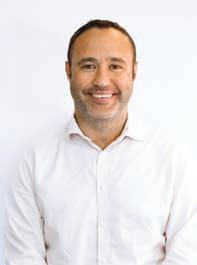
“We have a sector that is not only new, but which – thanks to the electricity challenges we are facing – is growing at a massive rate. Any industry with this type of incredible growth offers many possibilities to create new jobs. Furthermore, today’s youth are growing up with technology that was nonexistent a decade or so ago. These digital natives are already au fait with new technologies and grasp them quickly.”
However, not everyone more closely associated with the renewable sector is as optimistic. Carel Ballack, president of the Association of Renewable Energy Practitioners (AREP), suggests a major challenge is that most forms of renewables still require skilled or semi-skilled workers.
“Unfortunately, many of the unemployed youth are unskilled and, to a large extent, not educated meaningfully in ways that would assist them to work with these technologies,” he says.
“The only way large numbers of these youth can be absorbed into the renewables market is via skills development programmes to make them more employable. It is, however, the government’s role to implement such programmes at scale.”
RED TAPE, COSTS AND TIME ARE BIG HURDLES
mentor organisations so they can gain tangible working experience, he says.

“These programmes should be a minimum two years for someone with an N3 or N4 qualification or four years for those with just a matric, so it is a time-consuming approach, but you will have skilled people at the end.
He believes there is a distinct divide between what TVET colleges are teaching and what the industry is doing.
“The only way for these to work effectively is if we can narrow the gap and create greater synergy between what is taught and required to pass a trade test and what is required by the industry,” adds Ballack.
needs investment, as the time to
Orelowitz notes some things that are holding back the more technical training –the red tape around accreditation, the cost to set up and the content that requires a signifi cant upgrade. “It also needs investment, as the time to undergo the training takes longer than soft skill-type training.”

Ballack agrees, indicating that a typical government skills programme is too short-lived to provide relevant skills.
“Industry feedback suggests that the sector education and training authorities (SETAs) have not been as effective as hoped. Few mechanisms, such as an apprenticeship, flow from these skills programmes, and few of the youth have been taught how to start businesses.”
They need to implement a stipend structure and place students with
effectively is if we can narrow the and

Orelowitz feels similarly, explaining that TVET colleges must be prepared to receive help and guidance from the private sector and private training companies if they hope to capacitate and run such programmes at mass.
“Ultimately though, the job opportunities are there, the issue is creating the right skills for those jobs, which will require co-operation between the private and public sectors. However, this new sector certainly provides plenty of hope for impacting positively on job creation. We now need to work together to build the skills to meet demand. If we get this right, job opportunities will increase, and the youth will have an opportunity to thrive,” he concludes.
THE ECONOMY, INCREASE TRAINING
The Chartered Institute of Building (COIB), which will be conducting the Youth Symposium at the upcoming African Smart Cities Summit, says the renewable energy market, while able to absorb labour into new roles, operates as a component of the wider economy. Therefore, growing all aspects of the economy is central to generating employment.

IMAGE: SUPPLIED
Nonetheless, COIB says TVET colleges can play a massive role in the development of the green industry and the economy generally. A major component of the renewable energy industry involves the installation of electrical systems. TVET colleges can play a role in increasing the number and competence of electricians and other skills needed for these industries.
Daniel Orelowitz
YOUTH MONTH
Carel Ballack
22 VOICE OF LOCAL GOVERNMENT ISSUE 42
Agriculture’s opportunities are blossoming amid new technolody and a globalised population, attracting greater interest from the youth.
“The opportunities in agriculture are endless,” says Shandini Naidoo, founder of agricultural exports company Avoport. And she should know. Naidoo left a career in law to become an agri-entrepreneur, and, at the age of 33, the youngest director of the National Agricultural Marketing Council (NAMC).


“There is space to develop yourself in agriculture, to build a company and make a contribution to the country. New opportunities are around every corner and success is waiting for those eager to learn and work hard,” Naidoos says.
Although born on a livestock farm, Naidoo’s path took her into law after school. Stationed at a mine and heading up projects that aided rehabilitation of the land, including those that were agriculturebased, Naidoo realised she had always had a passion for farming. “Talking with my team leader one day, he told me I’d never make money billing eight hours a day. I was quite shocked – I had just studied for seven years to become a lawyer!
“He then told me about a friend that had started a business trading oranges on the global market from his laptop. That piqued my interest, and I started researching the avocado trade –also export-based – and looked for opportunities in the market. A few months later, I resigned and began building my own business.”
Naidoo adds that as jobs have become scarcer sinced COVID-19, the time is ripe for entrepreneurially minded people to start a new venture. “You just need to be willing to take the bull by the horns and go for it!”
An obstacle affecting young and old is access to financing to fund operations. But both Naidoo and Philile Majozi, trainer manager at Buhle Farmer’s Academy, agree that there are multiple solutions to this problem.
“I didn’t have funding initially,” says Naidoo, “instead, I focused on building my image to the point where people


Agriculture’s spring is being ushered in by the youth
Agriculture is dusting off its image as a vocation for older, rural folks and attracting fresh new energy, writes LINDI
BOTHA

wanted to fund me. My success has come from networking and getting recommendations from people with whom I have built relationships. Our parents didn’t have social media to help them engage, but we, the youth, do. I introduced myself to secretary generals of huge companies on social media and they responded positively. All this helped me gain traction rather than waiting to be handed a chunk of money.”
START SMALL, SCORE BIG
Majozi emphasises the importance of starting small. “I had a student who used his R350 government grant money to buy seeds to grow and sell vegetables. He has since grown into a successful farmer.”
She agrees that funds are hard to come by, but says many companies are willing to give inputs instead, or learning opportunities, which can open many doors.
Majozi has seen many success stories during her time as a trainer. Although her dream was to become a farmer, she quickly realised there were many more avenues to explore within this industry than just working the land. At 35, she has already worked her way into a management role and is excited by the new opportunities in the sector. “With the new wave of youth entering this sector, we are seeing an increased interest in fields, such as urban, vertical and indoor farming. You don’t need huge tracts of land to farm.”
NUMEROUS POSSIBILITIES

“During lockdown, many people lost their jobs or had to start farming in their backyards to have easy access to food,” Majozi says. That ignited a passion and a whole new world opened for many when they started researching all the possibilities within agriculture. It created a turning point, and there are definitely more younger students at the academy now than before 2021.”
Both women believe there is a bright future for youth in agriculture. “It’s a growing industry and you can develop more job opportunities for others,” says Majozi.

This is exactly what Naidoo has in mind. Through the training and opportunities her company offers, she aims to double agriculture’s contribution to the gross domestic product by empowering small-scale farmers.
With such fresh ideas and gusto these young women, the agricultural sector’s problem of an ageing population is set to diminish.
IMAGE: SUPPLIED
a are learning increased
Shandinii Naidoo
ISSUE 42 VOICE OF LOCAL GOVERNMENT 23 YOUTH MONTH
Philile Majozi
Incorporating technology into schools is a must
The rapid evolution of technology has necessitated the fast introduction and integration of technology subjects into our school curriculum, writes
DR BENADETTE AINEAMANI, executive: product and services at Maskew Miller Learning
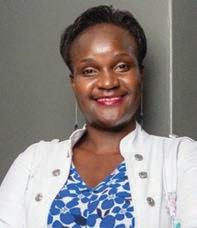
Equipping tomorrow’s leaders goes far beyond ensuring employability, it also ties into providing South African learners with the ability to keep up with the fast pace of technological advancements. This starts with rapidly incorporating technology into our school curriculums – a critical mission if South Africa is to overcome its three most significant challenges: poverty, inequality and unemployment, A rising number of schooling systems around the world have already recognised the benefits of a technology-centred curriculum. In South Africa, notably, the Department of Basic Education has announced the launch of coding and robotics into the school curriculum from as early as Grade R to Grade 9.
BENEFITS APLENTY
Incorporating technology into curriculum development could have numerous benefits. Technology provides learners with access to a wealth of resources, including online libraries, open educational resources and online courses. This access is critical in South Africa, where physical access to resources can be limited due to geographic and socioeconomic factors.
Technology also enables personalised learning experiences as the curriculum can be tailored to meet each learner’s individual needs and abilities. This personalised approach can help address the diverse educational needs of South African learners.

Technology facilitates interactive learning experiences, such as virtual reality simulations and gamification, which promote engagement, motivation and knowledge retention. Innovative ideas in the technology space can help to address the digital divide by providing equal access to resources and opportunities to learners from disadvantaged backgrounds. Incorporating technology into curriculum development presents numerous opportunities, but it also presents challenges, especially in South Africa. Some of these challenges include:
• Infrastructure: implementing technology in South African schools can be challenging due to inadequate infrastructure and reliable electricity.
• Cost: Implementing and maintaining technology can be challenging, particularly for under-resourced school.
• Teacher training: teachers may lack the necessary skills and training to integrate technology effectively into their teaching practices, leading to ineffective implementation and use. Technology has significantly impacted curriculum development, bringing many benefits to learners But we must be cautious. Implementing and maintaining technology can be challenging, and access to technology is not evenly distributed, not by a long shot. The digital divide still remains a challenge for curriculum delivery, but one thing is for sure, technology will be an integral component of modern education.
Innovative ideas in the technology space can help to address the digital divide by providing equal access to resources and opportunities to learners from disadvantaged backgrounds.
IMAGE: SUPPLIED
Dr Benadette Aineamani
24 VOICE OF LOCAL GOVERNMENT I SS UE 42 YOUTH MONTH
The impact of SA’s alarming unemployment on its children
Studies by Khulisa Social Solutions indicate that dire socioeconomic circumstances, such as joblessness, could negatively affect parenting and childhood development.
By LESLEY ANN VAN SELM, founder and managing director of Khulisa Social Solutions
Unemployment has wreaked havoc in South African communities for many years. Increased joblessness is threatening parenting and childhood development in the country’s communities.
ABOUT KHULISA SOCIAL SOLUTIONS
Khulisa is a nonprofit company that helps vulnerable children, youth and communities unlock their potential and develop skills to assist them towards a sustainable future.
It operates nationally, employs over 180 staff through 18 offices, and works in approximately 150 communities in collaboration with 350 nongovernmental organisation partners, impacting the lives of close to 200 000 people annually.
Khulisa partners with national and local government departments, schools, correctional facilities, community leaders, corporates, thought leaders, academic institutions and private companies.
Khulisa’s internationally acclaimed and locally rewarded best practice programmes deliver positive and measurable impact with the main focus on youth and community development.
In a recent study targeting early childhood centres to investigate the challenges facing young children, Khulisa found that 65 per cent of the children were aggressive, 43 per cent of the children struggled with bedwetting, 69 per cent had difficulties with learning, 42 per cent showed signs of behavioural changes, 45 per cent were excessively tired, 50 per cent were fearful and quiet, 33 per cent acted immaturely for their age and 15 per cent showed signs of physical symptoms of abuse.
We believe these findings clearly demonstrate the negative effects of the dire socioeconomic circumstances in the country. Furthermore, we noticed a strong correlation between parenting styles and childhood development.
THE PARENT-CHILD RELATIONSHIP
Our dialogue circles with parents and children found that unfavourable parent-child relationships centred around concerns of lack of employment and financial constraints, parenting, lack of parents, children with disabilities, emotional abuse, mental abuse, physical abuse, substance abuse, communication, conflict, equality, honesty, quality time, respect, school attendance, teenage pregnancies, trust, understanding, crime, and gender-based violence (GBV).
Furthermore, although Khulisa found that the majority of parents polled displayed authoritative parenting, an excessive number of elements of authoritarian, permissive and uninvolved child-rearing practices were identified, which could affect the children negatively.

These insights correspond with our Ecological Model and Theory of Change, which proposes that child difficulties and negative parenting are closely connected. Parents have also admitted they need guidance on more positive approaches to discipline and child-rearing practices. Thus, we believe, as parents navigate daily challenges that are stressful, such as unemployment and crime, they need our support to arm them with improved skills to better look after their children.
A COMMUNITY-COLLABORATIVE APPROACH
Considering this, Khulisa has created interventions and programmes aimed at optimising early childhood, school-going children, youth, adults, and parent-child development. Without a doubt, our communities are burdened with a host of problems, and they need our help. Khulisa adopts a community-collaborative approach to identify needs and propose solutions that constitute a sustainable community-led application to target and combat their challenges. With the backing of the broader civil society and our respective stakeholders, we can ease the pressure our fellow South Africans are enduring.
IMAGE: SUPPLIED
I SSUE 42 VOICE OF LOCAL GOVERNMENT 25 YOUTH MONTH
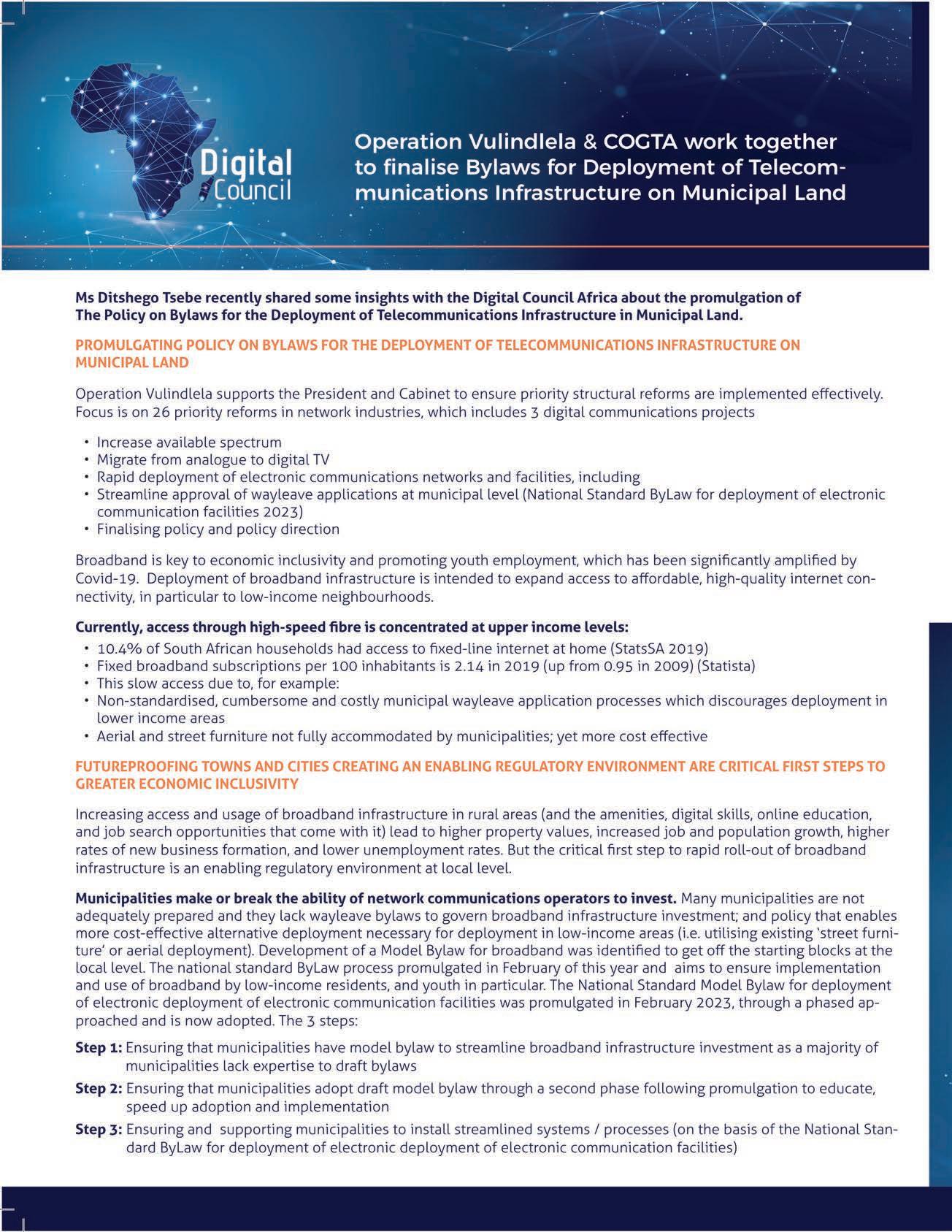
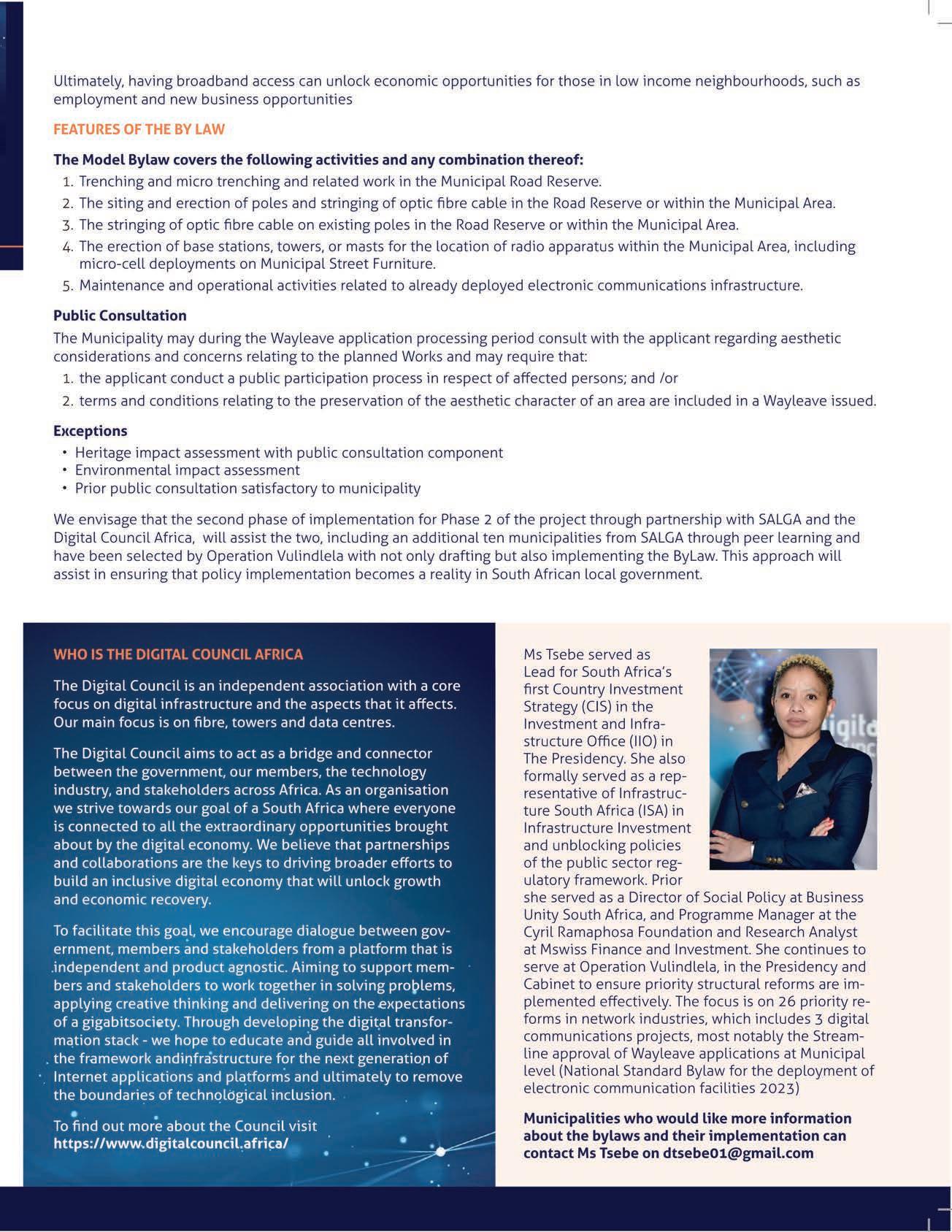
The critical role of data centres for business success in Africa
As energy crises and other challenges persist, the significance of outsourced data centres in Africa is increasing. Here’s what to consider when selecting a partner.
By SABELO MABENA, executive head of products and services at Vodacom
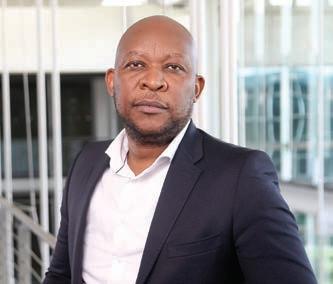
As the world emerges from the worst economic recession since World War II, it’s clear that the global recovery is uneven. Markets such as Africa, with slower growth rates, are feeling the impact of the slow recovery acutely. The situation is unlikely to change anytime soon, with the International Monetary Fund forecasting global growth of just 2.9 per cent in 2023, nearly a full point lower than the historical average. This economic challenge is compounded by world conflicts, supply chain issues and burgeoning energy crises.
Small and medium enterprises (SMEs) are critical to the success of the economy, contributing a significant portion to the national gross domestic product and total employment. It is crucial that this sector has a reliable partner to turn to in these uncertain economic times. Outsourced data centres are one solution to help SMEs remain agile and grow. However, they have often been viewed as complex and costly, with their own set of challenges.
THE POWER PROBLEM
At the core of the importance of outsourced data centres in Africa presently is the power crisis. On-premise data centres are becoming extremely expensive
FAST FACT
According to Africa Data Centres, South Africa will account for the bulk of the R93-billion investment expected to enter the Africa data centre market by 2026, with the country securing an estimated R57.7-billion in investments by that time.

such as diesel. Most data centre providers pass on the new cost to the consumer or end customer, resulting in very high power costs.
The process of certifying a data centre facility is complex and involves several parties. For those looking to invest in a data centre solution, the most important thing to understand is the tier certifications. Generally, tiers 3 and 4 are considered the industry standard, offering 99.9 per cent service-level agreement certifications. However, there is an unfortunate loophole in the certification process that allows data centre providers to have a tier 4 design certified, only to build a tier 3 data centre, and thus charge customers a higher price for a lesser service. To ensure the best value for money, businesses should partner with a certified and trusted data centre provider.
RECOVERY PLAN
to run. The cost of diesel needed to run generators and expenses associated with the continual maintenance of hardware have increased significantly, on top of growing security and housing costs. Outsourcing your data centre is one way to create cost-effectiveness. It is the responsibility of your provider to ensure your hardware is safe and in working order. However, power costs are usually bundled to include both municipal and those associated with backup supplies
The rising incidence of data-related cybercrime and the threat of lost data due to power outages make an o -site recovery facility imperative.
Another compelling reason to partner with a trusted data centre provider is reliable disaster recovery. Disaster recovery is no longer an option for businesses; it’s a necessity. Even for those who would still like to keep the majority of their hardware on premise, the rising incidence of data-related cybercrime and the threat of lost data due to power outages make an off-site recovery facility imperative.
In conclusion, outsourced data centres are becoming increasingly important in Africa, where the power crisis and economic challenges are ongoing. They are a crucial solution for businesses looking to remain competitive in a digital market. To ensure the best value for money and reliability, businesses should partner with a certified and trusted data centre provider.
28 VOICE OF LOCAL GOVERNMENT ISSUE 42 DIGITAL REVOLUTION
Sabelo Mabena
Driving economic and social progress in Africa
The continent requires innovative thinking to solve its issues and create a brighter future, writes RIA PINTO, country general manager and technology leader for IBM
 South Africa
South Africa
Over the past few decades, the role of research and innovation has become increasingly important in Africa, being a core pillar of the African Union’s Agenda 2063 goal of sustainable socioeconomic development and progress. The continent has the fundamentals to reap the benefits of research and innovation. It is blessed with a young, tech-savvy population, an abundance of natural resources and a rich heritage of innovation. However, climate change and agricultural productivity, youth unemployment and limited access to healthcare are some of the challenges that the continent faces.
PROMOTING ECONOMIC GROWTH AND DEVELOPMENT
Research and innovation are playing an active role in promoting economic growth and development, and African countries are increasingly recognising the importance of investing in research as a means of creating new industries, attracting foreign investment and boosting economic growth.
The African Union has set a target of increasing research and development spending to at least one per cent of the gross domestic product for each member state. According to UNESCO’s Education in Africa report, “several African countries, including middle-income countries like Algeria, Egypt, South Africa and Tunisia, but also low-income countries like Burkina Faso, Rwanda and Senegal are already above the 0.5 per cent level and continuing to push upwards”. This is a significant step towards promoting economic growth and creating new opportunities for entrepreneurship.
DID YOU KNOW?
According to a report by Burning Glass Technologies, there are three groups of skills that have emerged as critical for the digital economy: human skills, digital building block skills and business enabler skills. It refers to them as “new foundational skills”.
HELPING TO ADDRESSING SOCIAL AND MEDICAL CHALLENGES
Research and innovation are also playing a crucial role in addressing some of the most pressing social and medical challenges on the continent. Many African countries face significant health crises due to geographic barriers and a lack of resources. As governments have accelerated digitalisation to combat the pandemic, we have seen technological innovations such as telemedicine offer access to health services and remote monitoring. We are also seeing apps and healthcare systems integrating artificial intelligence (AI) and hybrid cloud to offer chatbots and video services for consultations. Additionally, drones are being used to deliver medicine, vaccines and donated blood in remote areas.
COMBATING CLIMATE CHANGE IN AFRICA
Another area where research is making a difference is in the fi eld of climate change. Although Africa only accounts for 2–3 per cent of global greenhouse gas emissions, it suffers disproportionately from the results. Extreme heat, extensive floods, prolonged droughts and sea-level rise are leading to loss of lives, property damage and population displacement. With only 40 per cent of the African population having access to early warning systems, adapting to the adverse impacts of climate change is
more important than ever. IBM Research – Africa and African Risk Capacity are using AI and hybrid cloud to improve climate risk modelling and predictions on the continent.
CREATING A PIPELINE OF HOMEGROWN TALENT THROUGH UPSKILLING
Building the right talent for Africa’s jobs is critical for the growth and development of the continent, as it has the potential to power the continent forward, unlock new market opportunities, shape the economy and aid recovery. But for this to happen, young people need to be skilled adequately. While AI and other emerging technologies, such as the internet of things and cloud computing, have been very disruptive in the digital acceleration of companies, quantum computing is also expected to stimulate the developments of new breakthroughs in science, research and innovation. Technology organisations have a role to play in ensuring our workers are ready to embrace these breakthroughs. At IBM, our work with the University of the Witwatersrand is enhancing the skills of existing scientists and researchers. Initiatives such as this are important in ensuring that we won’t be left behind as progress is made to explore the next frontier in the form of quantum computing, enabling researchers to drive innovation and solve societal challenges.
RESOURCES:

EDUCATION AFRICA REPORT

IMAGE: SUPPLIED
Ria Pinto
RESEARCH - AFRICA
IBM
ISSUE 42 VOICE OF LOCAL GOVERNMENT 29 DIGITAL TRANSFORMATION
Local Government must ensure cyber-resilience
Cyber-resilience in local government is given little thought – a grave oversight, in light of increased volumes of cyberattacks in South Africa, writes
TREVOR CRIGHTON
While South Africa’s national government established a national cybersecurity policy framework (NCPF) in 2012 to address cybersecurity challenges, the document doesn’t address cybersecurity at local government level. Indeed, it doesn’t seem that there are any national cybersecurity standards in place for local government, which means that the responsibility for cybersecurity lies with each local authority. That means government’s cyber-resilience – which refers to an entity’s ability to continuously deliver the intended outcome despite cyberattacks – is likely low at all three levels.
In a paper entitled “Cybersecurity and local Government: Imperative, Challenges and Priorities”, authored by Mmalerato Masombuka, Marthie Grobler and Petrus Duvenage, they assert that the “one-size-fi ts-all” cybersecurity approach employed by national government is neither sufficiently inclusive nor fully downward scalable. “The continuous evolution of cyberspace and the associated threats call for a concurrent and continuous adaptation in the approaches employed to build resilient cybersecurity at all levels of government. If not, local government, in particular, will continue to be an attractive target and a weak chink in the government’s cybersecurity armour,” they write.
As government adopts cloud and fourth industrial revolution (4IR) technologies, Muyowa Mutemwa, research group leader: data security and analytics at the Council for Scientific and Industrial Research (CSIR), believes that most local governments are migrating to the cloud without reviewing their policies or the South African regulations on this. Mfundo Masango, cybersecurity specialist at the CSIR’s
Information and Cybersecurity Research Centre (ICSC), shares this view: “There is an urgent rush to move to the cloud or use 4IR without conducting a full business impact analysis to identify what the policies outline and guide in terms of what is and isn’t allowed to be on the cloud.”
OUTSOURCED, OUT OF MIND
Masango says that cloud and 4IR tech operation are facilitated by third parties or service providers. “IT skills are outsourced, however, for government institutions that work with confidential information/data they may be using their in-house IT teams or outsourcing the skills to another government entity,” he says. The reason, says Mutemwa, is that most local government organisations have IT skills challenges, hence the dependence on third parties.
CONSTANT THREAT
Both Mutemwa and Masango agree that local government digital infrastructure regularly comes under attack from hackers. Mutemwa says that in some cases, the cause of the attacks is due to political tension, enumeration or knowledge that a local government organisation is using legacy applications. “These legacy applications are gold for hackers as they’ll use existing knowledge to exploit the infrastructure, updating or changing the legacy systems may affect the core functionality of the organisation, hence the risk acceptance or avoidance from local government,” says Masango.
Regarding the education given to local government custodians of digital assets,
Mutemwa’s response is: “Unless they obtain this information from attending local conferences, the answer is none! Most local governments might not know what the term ‘cyber-resilience’ means.”
PROACTIVITY IS KEY
The best way to avoid legacy systems from being infiltrated is by ensuring that patches are deployed timeously, software is updated and licences are renewed. “Most local government entities patch, update or renew licences due to regulatory findings by the Auditor-General of South Africa,” says Mutemwa. “However, this approach is driven by regulation. We need a government entity that drives proactive discussion with local governments about cybersecurity and works with them to create a charter and strategy.”

Masango says that creating a charter will enable quick risk identification and prevention as it’ll be standardised for each entity. “Implementing a centralised threat exchange platform for all local government entities to check against threats identified in other local governments will be advantageous as many may be using the same policies or procedures to manage their assets,” he says. “There is no threat sharing among local governments –third-party vendors usually share such information with local government’s IT departments,” says Mutemwa.
Masango believes that proactivity is key to improving local government cyber-resilience in South Africa.
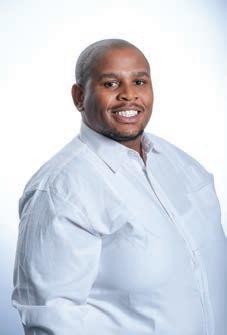
“Participation in cybersecurity conferences, challenges, upskilling of internal IT staff and knowledge-sharing between entities would improve things,” he says.
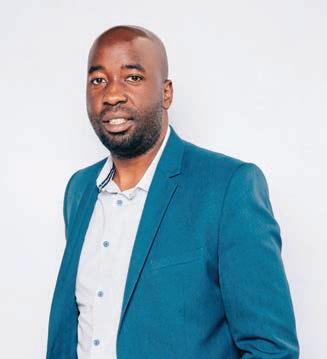
IMAGE: SUPPLIED
Mfundo Masango
30 VOICE OF LOCAL GOVERNMENT ISSUE 42 DIGITAL REVOLUTION
Muyowa Mutemwa
SALGA digital factory and the Matrix
SALGA is committed to driving digital maturity in municipalities. One of its interventions, the SALGA Matrix, aims to solve challenges around managing municipal integrated development planning. TREVOR CRIGHTON unpacks what this means
Kwena Mabitsela, senior project manager at the SALGA Digital Factory, says the organisation aims to drive digital maturity in municipalities. “We assess their status, explain the interventions we can offer and deploy digital products, such as data services and broadband,” she explains. “It involves plenty of research to find solutions that address problems faced by municipalities.

“The SALGA Matrix is one such intervention that aims to solve challenges around managing municipal integrated development planning (IDP). Mabitsela explains that the five-year IDP plans often become bloated and difficult to manage as they’re updated each year. “Some of these documents run upwards of 500 pages, spanning standard operating procedures, integrated people management systems, financial plans, project roadmaps, risk management, procurement and budgets, which are difficult to track as they are constantly updated,” she says.
“Most municipalities currently manage project tracking against the IDP manually, using tools such as Excel spreadsheets. As the year progresses, the level of manual work increases exponentially, and it can be challenging to get visibility around how each plan is tracking. The SALGA Matrix aims to help municipalities develop and manage their plans with ease, tracking progress and flagging issues in good time.”
MATRIX IN PRACTISE
Anything at a strategic level is digitised and becomes part of the SALGA Matrix. That process puts the data into visual grids that are easy to navigate, allowing municipal teams to drill down into each section to get more detail. The municipality’s strategic imperatives are at the top level to allow for quick tracking of the performance
““The
of different plans – anyone with access can see all the projects for the year and get an instant overview of their progress, making it easy for managers to quickly understand what the pain points are.
“They can track performance, manage risk and counter challenges more simply,” says Mabitsela. “It’s easy to get information, such as demographics, in a visual format and allows for collaborative planning and comments.
”Individual wards can track their performance as they add more information about their initiatives, unlock greater value and benchmark themselves against each other. “It’s proving helpful for councillors to be able to see how their wards are performing against the IDP in areas such as employment and internet access and to see snapshot profiles of their wards,” she explains.
TODAY, TOMORROW
Ray Nkonyeni and Lejweleputswa municipalities were the pilot sites for the project, with the system developed after evaluating the challenges each municipality faced. “We developed the system to help automate the tracking and management processes, working with the municipalities to test it before rolling it out,” says Mabitsela.
As the Matrix is a cloud-based system, it can be accessed by local government teams from anywhere and can be customised to meet each
municipality’s needs and feature their unique “look and feel”.
SALGA’s focus is currently on trialling the Matrix and ensuring its stability. “Because we’re hosting the tool, we have big plans for how we hope to use it,” says Mabitsela. “We’ve been able to draw incredibly rich data, even during the pilot phase, which is encouraging for the level of detail we’re going to have once more and more municipalities join up,” says Mabitsela.
“The information we are able to gather at that scale allows us to deploy analytics to guide SALGA interventions. We can communicate with each municipality when we see things are going well, or understand where they’re struggling and best determine how we can help. The key aim is to empower municipalities, help them manage their IDPs properly and address issues swiftly. ”It’s likely too soon to say what the SALGA Matrix will evolve into, but Mabitsela is hopeful that the information it will yield can be shared widely.
“Once the system has matured, we hope to start giving access to councillors to track and benchmark their wards and we also hope to be able to use it as a tool for political oversight,” she says. “Developing an IDP involves public consultation, so we hope to one day extend visibility on the IDP to the public, via the SALGA Matrix, so that they can track progress and hold their municipalities accountable.”
IMAGE: SUPPLIED
SALGA Matrix aims to help municipalities develop and manage their plans with ease, tracking progress and flagging issues in good time.”
– Kwena Mabitsela
I SS UE 42 VOICE OF LOCAL GOVERNMENT 31 DIGITAL
Kwena Mabitsela
REVOLUTION
Building fit-for-purpose electronic communications networks
In September last year, the Department of Cooperative Governance and Traditional Affairs published draft standard bylaws for the deployment of electronic communications and facilities for public comment. Once finalised, the bylaws should allow for the quicker deployment of electronic communications infrastructure.
By ITUMELENG MOGAKI
Operation Vulindlela (OV), established in October 2020 as a joint initiative of the Presidency and National Treasury to accelerate the implementation of structural reforms and support economic recovery, aims to modernise and transform network industries, including digital communications.
Ditshego Tsebe, Operation Vulindlela representative and a senior policy consultant, says that to ensure priority structural reforms are implemented effectively and to accelerate network structural reform, OV’s role focuses on 26 priority reforms in network industries, which includes 4 digital communications projects:
1. Increase available spectrum.
2. Rapid deployment of electronic communication networks and facilities.
3. Streamline approval of wayleave applications at the municipal level (national standard bylaw for the deployment of electronic communication facilities 2023).
4. Finalising policy and policy direction.
Tsebe cites the President’s 2021 State of the Nation address in which he said: “We will facilitate the rapid deployment of broadband infrastructure across all municipalities by establishing a standard bylaw for the granting of municipal permissions.”
To date, Tsebe says, three of the four, increasing available spectrum, rapid deployment policy and a national standard bylaw for deployment of communication facilities with migration from analogue to digital TV, are still in progress.
On helping to address challenges in building fit-for-purpose electronic communications networks, Tsebe says: “We have concluded a successful spectrum auction in 2021 raising over R10-billion, and in February of this year, the standard bylaws for the deployment of electronic communications were approved by cabinet and gazetted, followed by approval of the national policy on rapid deployment of electronic communications networks and facilities gazetted in March 2023.”
PHASE TWO IN PROGRESS
OV is currently implementing phase two of the standard bylaw process to assist municipalities in processing applications, have clear requirements to address delays by operators and find remedies for municipalities to address damage caused by operators.
“Phase two includes a selection of two municipalities that volunteered to be assisted in the implementation of bylaws to ensure the bylaws for their municipalities are approved through council resolutions.
“We envisage this peer-to-peer learning will be rolled out to more municipalities in partnership with SALGA to ensure many more municipalities adopt and implement the bylaws to have a more standardised and common approach across the country,” says Tsebe.
INFRASTRUCTURE CHALLENGES
SALGA chief digital officer Kutlwano Chaba says the infrastructure challenges to building fit-for-purpose electronic communications networks is more prevalent in rural areas.
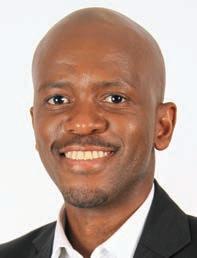
He adds that one of the main priorities for inclusion is to make sure fibre and other wireless technologies are deployed in unserved, remote areas to provide speedy connectivity to the people.
Chaba says one of the biggest challenges is the lack of priority in these remote areas by the private sector, as it does not create business. “The amount of capital required versus what they would make is more feasible in urban areas. The other challenge is that there are no standardised bylaws for network providers to follow when applying for permission to deploy networks on municipal lands.
“Bylaws are meant to manage the wayleave applications to permit digging trenches on the pavements and mountainous areas, or erecting an electronic communications infrastructure such as a tower.
“Some municipalities do not have those wayleaves and it is difficult for service providers wanting to deploy infrastructure because there is no proper instrument to manage the application or the actual work.”
Standardising bylaws will make it easier to regulate these applications. Even if there are slight differences, such as proximity and municipality charges, the application process will be the same.
Chaba cites the example of the Saldanha Bay Local Municipality’s bylaw, which states that only one service provider will be allowed to dig and install infrastructure. “They issued a tender for one infrastructure company to do the digging; anyone else wanting to offer a service must rent from that one infrastructure company.
“That empowered people living in reconstruction and development programme areas to choose a Wi-Fi service provider, resulting in a 60 per cent uptake by indigent people,” he concludes.
IMAGE: SUPPLIED
“Bylaws are meant to manage the wayleave applications to permit digging trenches on the pavements and mountainous areas, or erecting an electronic communications infrastructure such as a tower.” – Kutlwano Chaba
32 VOICE OF LOCAL GOVERNMENT I SSUE 42 DIGITAL REVOLUTION
Kutlwano Chaba
Digitally transforming municipalities to match up to global smart cities
South African municipalities are increasingly transitioning to digital integration of services, prompted by several factors, including the need to meet service delivery mandates, reduce costs, improve efficiency and try to match up to other smart cities globally, writes
ITUMELENG MOGAKI
digitising of their processes. “The aim has always been to continually modernise the metropolitan’s internal systems to make it easier for information and data to flow and to change several traditionally analogue-based customer contact processes to digital.
“Even though our processes are implemented internally, ultimately it’s about our external focus strategy to become a leading smart city where citizens can interact with government beyond the traditional 8am–4pm,” Khumalo says.
billion rands in payments annually because the e-Tshwane platform is efficient, time-saving and cost-effective for citizens.”

NONTECH USERS CONSIDERED
For those without access to the internet, there is a WhatsApp channel using the number (087 153 1001) to get a chart they can follow to view how much they owe simpy by following the prompts.
“We also recently launched a USSD channel whereby citizens dial *120*5757# to find out how much they owe.
“We have taken a posture that leans towards ensuring that as we modernise and go the smart city route, we do not leave behind people with no access to the internet and fancy devices. Therefore, the focus is not only on high-end digital transformation. but also on the lower end,” says Khumalo.
INTEGRATING SYSTEMS IS NOT WITHOUT CHALLENGES
Municipalities face several challenges in transitioning to digital integration of services. These include the lack of resources to invest in the necessary infrastructure and technology, a shortage of skills to implement and manage digital systems, and resistance to change from staff used to working in traditional ways. But there are pockets of success. Some municipalities that have successfully transitioned to digital integration of services include Ekurhuleni Metropolitan Municipality, the City of Cape Town and the City of Johannesburg. These municipalities have several digital initiatives that have positively impacted the services they deliver, as well as interventions such as a single customer database, online payment systems, mobile apps for residents, online permit systems, an online booking system for events and online billing systems.
Musa Khumalo, group head for shared services for the City of Tshwane, shares that, for instance, e-Tshwane, a “secure” free online service designed to make it faster and easier for citizens to interact with the city, has allowed them to improve customer service through several digital integrated services.
ALL ABOUT E-TSHWANE
Khumalo says they have implemented internal-focused programmes around the
“For example, we recently implemented our electronic document management system to go paperless.
“We have also expanded the platform where citizens can send and manage service delivery and complaints. Whether it’s reporting nonfunctioning streetlights or potholes, citizens can now go on e-Tshwane and raise a particular complaint and get an immediate reference number.
“Complainants can monitor the resolution of their query without having to call a customer care agent,” Khumalo explains.
He adds that they have also expanded the programme to cover build environment and economic development platforms, where citizens can now apply online for building plans or any modification to their property, cutting off the physical walk-in process that takes time, money and sometimes patience.
“The platform has grown and made life easier for citizens. We now collect over a

FAST FACT
ICASA expects 5G to positively impact government agencies in areas such as facilitating the digitisation of public services, for example, Smart ID, increasing citizen engagement and helping make public institutions more inclusive and effective.
“In a country like ours, with its many social and economic challenges, going digital is a costly exercise because not all municipalities have the resources to rapidly digitally transform cities for the benefit and convenience of citizens,” says Khumalo. Digitalisation has been looked at as an introduction to technology, explains Khumalo, so they have not fully explored the way business is changing. “Digital transformation is looking at what the fourth industrial revolution is, and it differs quite extensively from just the implementation of technologies.
“Take waste, for example, what is a smart way of managing waste in an area such as Gauteng, which has refi ned landfi ll sites? We must drive smart ways of converting waste into energy to provide solutions to energy supply.
“Our smart city strategies must influence service delivery strategy and vice versa,” he concludes.
IMAGE: SUPPLIED
RESOURCES: ICASA 5G ANNUAL REPORT
ISSUE 42 VOICE OF LOCAL GOVERNMENT 33 DIGITAL REVOLUTION
Community-based programmes to boost the economy
The Department of Science and Innovation’s 2023/24 budget focuses on community-based science, technology and innovation programmes to create economic opportunities
The Department of Science and Innovation (DSI) has tabled its R10.9-billion budget for 2023/24 – up from R9.1-billion in the last financial year. Presenting the budget in Parliament on 23 May 2023, Minister of Higher Education, Science and Innovation Blade Nzimande said that the DSI would continue to build a capable state and contribute to South Africa’s economic recovery through the Science, Technology and Innovation (STI) Decadal Plan and its STI budget co-ordination mechanism.
The budget vote was tabled under the theme, “Using science, technology and innovation to grow our country and together resolve its challenges”.
The majority of the department’s budget is spent on transfers to its entities.
The National Research Foundation’s allocation of R1.001-billion supports and promotes research through the funding of human resource development and
the provision of facilities to enable the creation of knowledge, innovation and development in all fields of science and technology, including indigenous knowledge systems.
The Council for Scientific and Industrial Research receives R1.006-billion to foster industrial and scientific development, particularly through multidisciplinary research and technological development, either by itself or in co-operation with public and private sector institutions.
The Human Sciences Research Council, which receives R322.332million, undertakes, promotes and co-ordinates policy-relevant, problemoriented research in the human and social sciences, including research projects for public sector users, nongovernmental organisations and international development agencies, in partnership with researchers worldwide, but particularly in Africa.
The Technology Innovation Agency receives R460.131-million to stimulate and intensify technological innovation to improve economic growth and the quality of life of all South Africans. The agency is key for ensuring the translation of the research and development outcomes of higher education institutions, science councils and public entities into commercial technology products and services, thereby intensifying the impact of innovation on the economy and society.
The Academy of Science of South Africa (ASSAf) , is allocated R33.970-million. ASSAf promotes common ground across all scientific disciplines, promotes innovative and independent scientific thinking and the optimum development of the intellectual capacity of all people and provides effective advice and facilitates appropriate action in relation to the collective needs, opportunities and challenges of all South Africans.

34 VOICE OF LOCAL GOVERNMENT ISSU E 42
Implementation of the innovation fund would be scaled up to support the early development and expansion stages of technology-based South African firms.
The South African National Space Agency , which receives R163.063-million, promotes the use of space and co-operation in spacerelated activities, while fostering research in space science, advancing scientific engineering through developing human capital and providing support to industrial development in space technologies.

IN THE PIPELINE
During the budget presentation, Minister Nzimande announced that, as part of the government’s commitment to fast-track economic recovery, implementation of the Innovation Fund would be scaled up to support the early development and expansion stages of technology-based South African firms.
“We also remain resolute to increase gross domestic investment in research and development as a percentage of
gross domestic product, with the aim of achieving the National Development Plan’s target of 1.5 per cent,” he said.
As the country grapples with energy security and the government’s commitment to transition from a carbon-intensive to a carbon-neutral economy, the department will continue rolling out the Hydrogen Society Roadmap.
“Through the CoalCO2-X project, we have supported a carbon capture and utilisation technology, which captures carbon dioxide from flue gas and then converts it into a fertilizer salt using ammonia,” the minister said.The technology was successfully demonstrated at a cement plant in Limpopo in January this year.
COMMITTED TO HUMAN CAPITAL DEVELOPMENT
The Deputy Minister of Higher Education, Science and Innovation, Buti Manamela, told Parliament that the department remains committed to keeping human capital development at the heart of all its programmes.
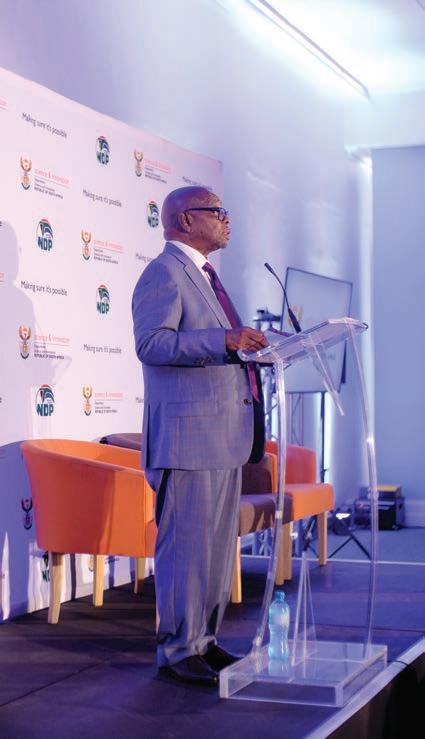
“Part of ensuring we have the requisite number of scientists, researchers and innovators is by deliberately producing a critical mass of young black and women scientists and researchers. To this end, in 2021/22, a total of 5 643 honours and master’s students, and 2 527 PhD students were supported,” said Manamela.
Manamela added that support for STI as a catalyst for youth entrepreneurship would continue.
The department will also continue to invest in the Grassroots Innovation Programme (GIP). This is aimed at commercialising local innovations from ordinary citizens. The programme targets grassroots innovators that require funding to develop and prototype their technology innovations up to pre-commercialisation.

A grassroots innovator is defined as, “an individual that undertakes innovations to solve local challenges using local resources and capabilities through working outside the realm of formal innovation institutions”.
Community members with a concept that can result in solving challenges are encouraged to apply for support from the GIP initiative.
Another programme aimed at supporting innovation in disadvantaged communities is the Living Labs Pilot initiative. The programme has been designed to support grassroots innovators and contribute to local economic development (in rural and peri-urban communities.
Living labs are community-based technology hubs that pool resources, talent and community knowledge to solve local challenges. The programme funds and supports the installation of physical innovation facilities or infrastructure and programmes to mentor emerging innovators and provide a creative space for local stakeholders to co-create solutions to local problems and contribute towards local economic development opportunities.
For more information:
Zama Mthethwa
0828083956
Zama.mthethwa@dst.gov.za
www.dst.gov.za

IMAGE: SUPPLIED
Scan this QR code to go directly to the DSI website.
Living labs are community-based technology hubs that pool resources, talent and community knowledge to solve local challenges.
“Part of ensuring we have the requisite number of scientists, researchers and innovators is by deliberately producing a critical mass of young black and women scientists and researchers.”
ISSUE 42 VOICE OF LOCAL GOVERNMENT 35 ADVERTORIAL | THE DEPARTMENT OF SCIENCE AND INNOVATION
– Buti Manamela
Searching the skies
Astronomy research and development in Africa is no pipe dream
From South Africa’s Square Kilometre Array (SKA) core site near the remote town of Carnarvon to the high plateau of Khomas in Namibia, where the High Energy Stereoscopic System (HESS) stands, Africa is a growing hub for astronomy research.
In the north, south and eastern corners of Africa, astronomical societies focusing on galaxy formations and evolution, instrumentation and research into black holes are providing vital clues to the origins of the universe.
The groundbreaking research on African soil is proof that the continent is a force to be reckoned with in the world astronomy community. The sentiment was echoed during the third annual conference of the African Astronomical Society (AfAS), which took place earlier this year.
South Africa hosts the AfAS secretariat through the Department of Science and
“Africa is home to an amazing range of astronomical facilities, including a fully operational radio telescope dish array in the Northern Cape called MeerKAT, which will become part of the larger SKA facility.”
 Prof Thebe Medupi
Prof Thebe Medupi
Innovation (DSI), aiming to grow and support a globally competitive and collaborative astronomy community in Africa.
Astronomers from across the length and breadth of the continent attended the event to take stock of progress made with significant astronomy projects. The gathering also focused on science communication, outreach and education activities emanating from astronomy in Africa.
More importantly, the conference offered international partners an opportunity to gain insights into Africa’s capabilities in terms of infrastructure, research activities and mega-science projects.
AN IMPRESSIVE ARRAY OF FACILITIES IN AFRICA
AfAS president Professor Thebe Medupi said Africa is home to an amazing range of astronomical facilities, including a fully operational radio telescope dish array in the Northern Cape called MeerKAT, which will become part of the larger SKA facility.
Prof Medupi said that construction had begun on the first phase of the international SKA radio telescope – the most powerful radio facility in the world, which Africa and Australia are co-hosting. Sutherland, also in the Northern Cape, hosts the Southern African Large Telescope, the largest single optical telescope in the Southern Hemisphere, where world-class research is carried out.
–
36 VOICE OF LOCAL GOVERNMENT I SS UE 42
South Africa’s MeerKAT telescope in the Northern Cape.
“We host a high-energy telescope called HESS in Namibia, and one-metre telescopes in Egypt, Ethiopia and Burkina Faso, and we are even talking about the African Very Long Baseline Interferometry Network,” said Prof Medupi.
He added that the greatest challenge for the continent was to increase the number of qualified and experienced astronomers that could operate these African facilities to produce world-class astronomy. Africa has fewer than 400 astronomers, most of whom are in the Southern Africa region.
Takalani Nemaungani, the chief director: astronomy at the DSI, said the African astronomy landscape continued to evolve. South Africa’s most powerful telescope, the MeerKAT, had already made significant finds, including the discovery of two giant radio galaxies. The fact that MeerKAT detected two of these monsters in a relatively small patch of sky suggests that giant galaxies may actually be much more common than previously thought. This gives astronomers further vital clues about how galaxies have changed and evolved throughout cosmic history.
“With the MeerKAT unlocking such vital clues to long unanswered questions, it therefore made sense to add more dishes to the current 64-antenna MeerKAT telescope to a full array of some 200 telescopes,” Nemaungani said.
In neighbouring Nambia, several other projects are underway, including the work to realise the prospect of hosting the Africa Millimetre Telescope (AMT). The AMT project, co-led by two teams at the Radboud University Nijmegen in the
Netherlands and the University of Namibia, aims to build a 15-metre single-dish radio telescope on the Gamsberg mountain in Namibia. This will be an essential link to the network of telescopes around the globe known as the Event Horizon Telescope (EHT), which recently produced the first-ever picture of a black hole. This was a major scientific breakthrough, confirming predictions from Einstein’s theory of general relativity.

In addition to being a vital link in the EHT Network, the AMT will be the only radio telescope in the millimetre-wavelength regime in Africa. As such, it will provide unique science opportunities for Namibia. By donating 80 per cent of the observing time to Namibia, the project team tries to maximise the AMT’s impact on Namibia.
The social and economic impact is further enhanced by setting up an education and outreach programme and boosting innovation and spin-offs in Namibia.
ENCOURAGING FUTURE ASTRONOMERS
Nemaungani added that AfAS had a crucial role to play in encouraging the use of astronomy for socioeconomic development, and strengthening the teaching of science, technology, engineering and mathematics (STEM) in schools, as well as raising public awareness through astronomy and related fields.
“AfAS supports the importance of astronomy for African nations, uses astronomy to inspire young Africans to pursue STEM careers, and works to expand the number of African astronomers and astronomers working in Africa,” he said.
The role of women in astronomy also featured at the conference.
According to the latest report from Unesco and UN Women, the representation of women scientists averages below 25 per cent in most African countries.
Astrophysicist Prof Mirjana Pović, an astronomer at the Ethiopian Space Science and Technology Institute, advocates for the inclusion of women and girls in science by promoting STEM for girls in Ethiopia.
In collaboration with AfAS, Prof Pović and colleagues co-founded the African Network of Women in Astronomy (AfNWA) to give more visibility to the work women are doing and inspire other women and girls to enter STEM-related fields. AfNWA is an initiative intended to close the gender gap in science by connecting women working in astronomy and guaranteeing female participation at all levels in Africa for the benefit of all.

Prof Pović believes that “through education, science and technology, we can fight poverty and make the world a better and more equitable place for all people, regardless of where they are from”.
Next August, Africa will host the General Assembly of the International Astronomical Union (IAU) for the first time. The role of the IAU is to promote and safeguard the science of astronomy in all its aspects, including research, communication, education and development, through international co-operation. Africa’s hosting of the prestigious IAU gathering is evidence that astronomy on the continent is highly regarded. The IAU gathering will take place in Cape Town in August 2024.

For more information:
Zama Mthethwa
0828083956


Zama.mthethwa@dst.gov.za
www.dst.gov.za
IMAGE: SUPPLIED
Scan this QR code to go directly to the DSI website.
“AfAS supports the importance of astronomy for African nations, uses astronomy to inspire young Africans to pursue STEM careers, and works to expand the number of African astronomers and astronomers working in Africa.” – Takalani nemaungani
Namibia HESS telescope.
ISSUE 42 VOICE OF LOCAL GOVERNMENT 37 ADVERTORIAL | THE DEPARTMENT OF SCIENCE AND INNOVATION
Transparency is key to coalition government success
Coalition governments in local municipalities are increasing. In 2000, there were 29 coalition governments, increasing to 80 in 2021 – 53 of these coalitions were stable, and 27 were unstable in 2021.
The South African Local Government Association (SALGA) says it supports coalition governments that operate within a regulatory framework and inspire confidence in the democratic system.
SALGA president Bheke Stofile explains that with coalitions becoming a permanent feature of local government democracy, in November 2021, SALGA collaborated with members of executive councils and tertiary institutions to develop a framework for coalition governments.
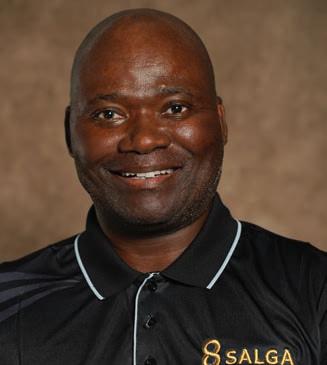
Since the 2021 local government elections, coalition governments are now common in many municipalities, writes
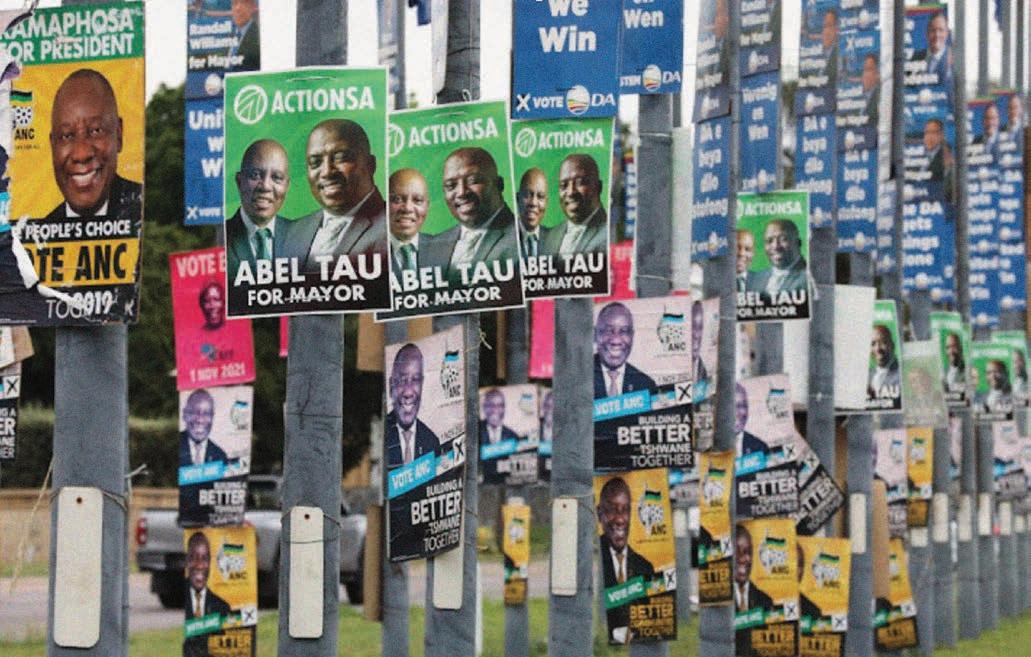 DENISE MHLANGA
DENISE MHLANGA
“The framework proposes that coalition agreements should prescribe decision-making procedures and dispute resolution mechanisms that help with ongoing coalition bargaining and conflict resolution,” he says.
Stofile explains that having a framework guides political parties in structuring and managing coalitions. Political parties and independent councillors are required to establish coalitions, but if they are uncertain about the rules, it results in unstable or short-lived coalitions – a common problem across the board.
CHALLENGES
Stofile says some of the challenges facing coalition governments include:
• lack of oversight and accountability measures;
• lack of transparency and community involvement and participation;
38 VOICE OF LOCAL GOVERNMENT I SS UE 42
Bheke Stofile
SOLUTIONS
“Many coalition-governed municipalities battle to deliver critical functions, such as the passing of budgets, leading to poor service delivery in these municipalities.”
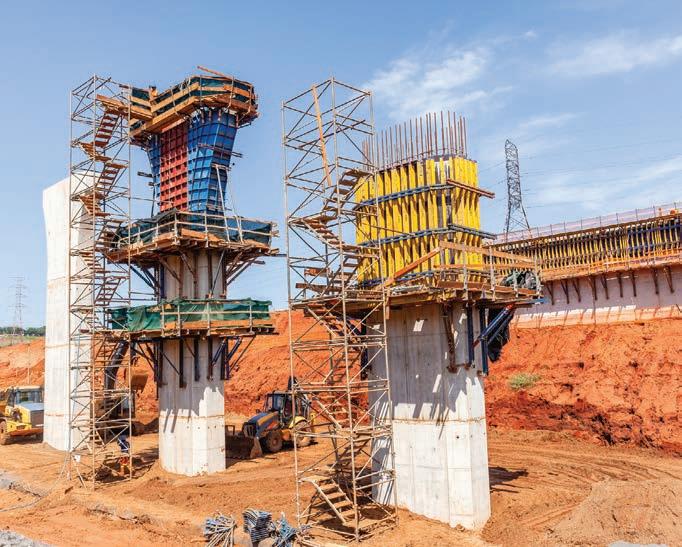 – Minister Thembisile Nkadimeng
– Minister Thembisile Nkadimeng
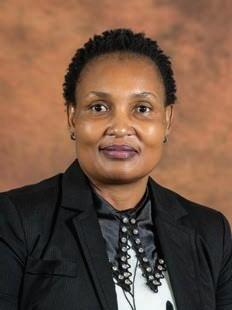
SERVICE DELIVERY
Political parties and independent councillors are required to establish coalitions, but if they are uncertain about the rules, it results in unstable or short-lived coalitions.
IMAGE: SUPPLIED • •
I SSUE 42 VOICE OF LOCAL GOVERNMENT 39 COALITION GOVERNMENT
Thembisile Nkadimeng
Co-operation and collaboration is needed now
BONOLO SELEBANO shares that ideological differences between political parties don’t matter much if service delivery is the basis of political coalitions

When politicians in coalition-governed municipalities play musical chairs with municipal leadership, especially the mayorship, public respect and confidence in this office dwindle with each passing mayor.
This is in response to the speed with which politicians change their mayors in high-profile municipalities such as the City of Johannesburg and Tshwane. And the reason is fragile and volatile coalition politics.
Although coalition governments are not new, coalition politics increasingly took centre stage in our country’s public discourse after the 2016 local government elections.
The elections produced 27 hung councils, and no political party had an outright majority to govern on its own in four of South Africa’s eight metropolitan municipalities: Tshwane, Nelson Mandela Bay, Ekurhuleni and Johannesburg.
After the 2021 municipal elections, the number of hung councils increased to 81; currently, 31 of these are led by unstable coalition governments.
South Africa’s established political parties can infer from this pattern, among other things, that voters in the country’s largest metropolitan municipalities do not have confidence in any of the parties to govern these municipalities on their own.
As a result, political parties must develop a solid understanding of coalition politics and governance as coalition governments are likely to continue into the future.
HIGH RATE OF MAYOR TURNOVER

However, it seems that this is not the case, with the cities of Johannesburg and Tshwane among the metros severely impacted by unstable political coalitions, resulting in a high rate of mayor turnover.
Since 2016, Tshwane has had five mayors, while Johannesburg has had nine. On the one hand, this pattern seriously jeopardises the delivery of essential services and may make it more difficult for a council to carry out its duties, such as passing budgets and establishing policies.
On the other hand, a high turnover rate of the city’s fi rst citizen due to volatile coalition politics sends a message to citizens and communities that political parties themselves
do not respect these positions as they are being reduced to political bargaining chips instead of electing the best among themselves to lead the municipal government. Consequently, the general public’s trust and confi dence in this offi ce dwindles with each new mayor.
GUIDELINES TO MANAGE COALITIONS
A growing number of public policy practitioners and analysts are now calling for regulatory frameworks to govern and oversee coalitions at the local level.
In the run-up to the 2021 municipal elections, the South African Local Government Association (SALGA) developed a framework for coalitions in local government in collaboration with the Dullah Omar Institute to address issues of instability and promote coalition co-operation.
The framework offers practical and implementable guidelines to political parties and councillors in coalition governments. It also lays out guidelines and introduces tools to structure and manage coalitions in practice.
This is a crucial road map for building effective, transparent and long-lasting political coalitions with a defined policy agenda focused on delivering services, which is what matters most to people and communities.
There has been much discussion about the potential for discord and disunity when political parties with opposing policy stances are forced to form a coalition to run a municipality.
While this may be true at other levels of government, local government is the one that is most in touch with the opportunities and challenges that people face daily.
Local government is responsible for ensuring access to essential services such as water supply and sanitation, that homes are electrified and streets, sidewalks and pedestrian areas are clean. Ideological differences between political parties don’t matter much if service delivery is the basis of political coalitions at this level of government.
Finally, the effectiveness of SALGA’s coalition governance framework depends on the political leaders who must incorporate it into their norms and standards for coalition governance.
This suggests, among other things, that the success of any regulatory framework depends on political parties working together, finding common ground and compromising.
If the current trend of growing political coalitions continues, political parties will have no choice but to adopt a culture of co-operation, fi nd common ground and compromise, and there is no better time than now to start putting this into practice.
IMAGE: SUPPLIED
40 VOICE OF LOCAL GOVERNMENT ISSUE 42 OPINION: COALITION GOVERNMENT
Bonolo Selebano
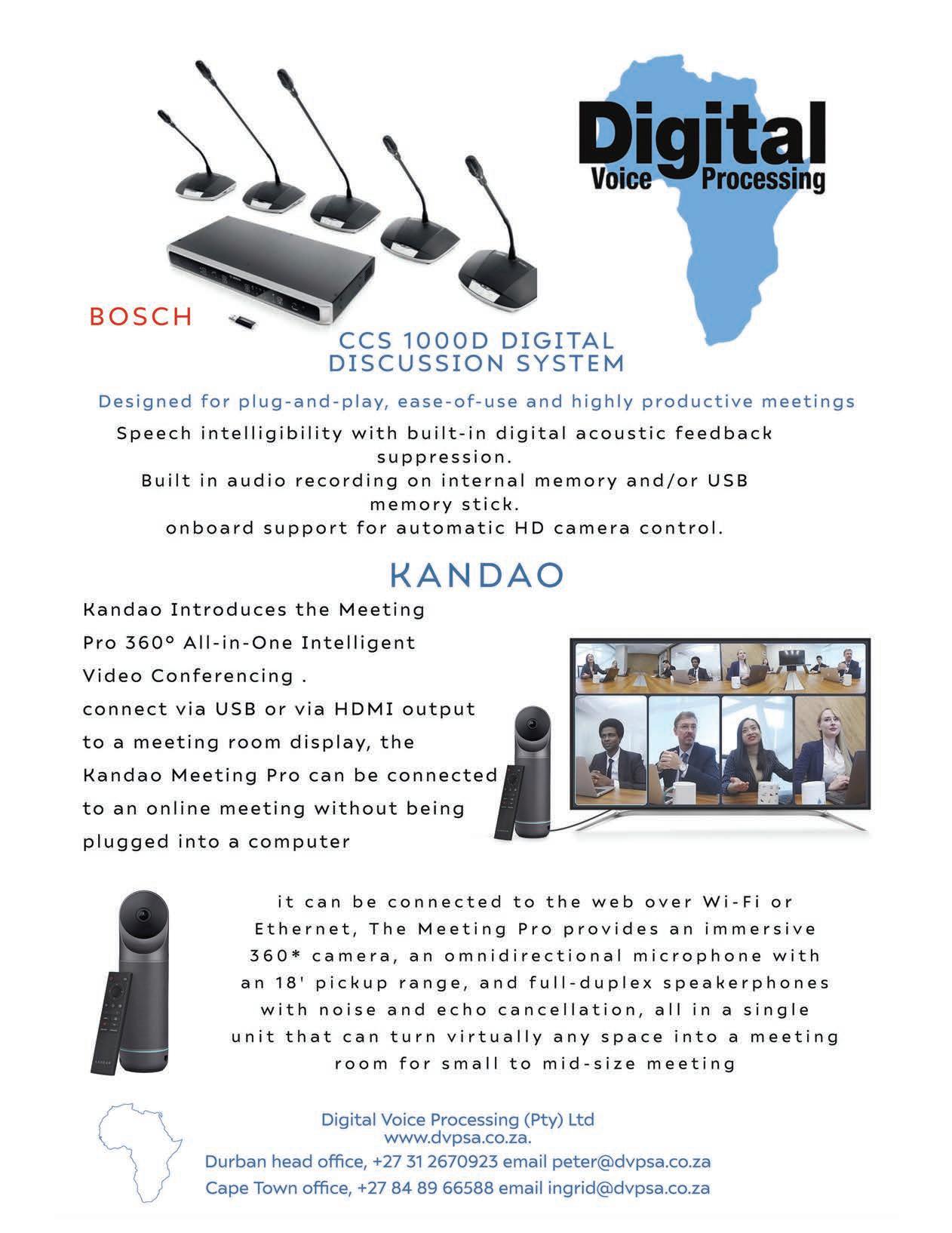
Municipal Boundary Re-determination Process

In terms of Municipal Demarcation Act (MDA)
The following steps are taken during the municipal boundary change process:
1 2 3
Initiation of Boundary Redetermination in terms of Section 22 of MDA
4
Publication in terms of Section 26 of MDA
Consideration of Section 26 views and representations
Determine boundaries in terms of Section 21 of MDA or conduct public meetings in terms of Section 28 of MDA
OR
Conduct formal investigations in terms of Section 29/30 of MDA
OR
Conduct both public meetings concurrently with formal investig ations
5 6 7 8
Consider Reports Decision to redetermine and publish in terms of Section 21 of MDA for objections
OR Decision not to Re-determine
For more information: info@demarcation.org.za
Consider objections
Final decision on redeterminationConfirm vary or withdraw
Publish decision in provincial gazette in terms of Section 21(5) of MDA
012 342 2481
072 819 8220
I www.demarcation.org.za
The change process is progessing

THE MUNICIPAL DEMARCATION BOARD shares the current status of the boundary change process


For the fi rst time in the history of the Municipal Demarcation Board (MDB), an overwhelming number of 51 180 (Batch 1) views and representations from members of the public has been recorded, following the publication of section 26 notices on proposals for change of municipal boundaries. This refl ects that the awareness, education and engagement initiatives have yielded positive results as more members of the public are taking interest in and actively participating in demarcation processes.
It should be noted that these proposals come from members of the public, organised groups, political parties, municipalities and national and provincial government, among others. Only a few proposals came from MDB – exercising its own initiative according to Section 22(1)(a) of the Municipal Demarcation Act 27 of 1998.
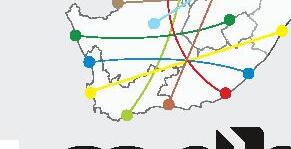
The board has, in line with section 27 of the Municipal Demarcation Act, considered all views and representations received, and has resolved to, among others, conduct formal investigations and/or public meetings on several proposals. Public consultations and formal investigations will commence from July to September 2023. Members of the public in affected areas are encouraged to participate actively in the meetings to air their views. The MDB is committed to ensure that it takes its decisions in consideration of inputs from members
of the public, as evidenced during the section 26 process. Therefore, members of the public are encouraged to be on the lookout for updates of the

process, including the public meetings schedule. The schedule will be shared through various channels, including the MDB website.
ABOUT THE MUNICIPAL DEMARCATION BOARD



The Municipal Demarcation Board is an independent authority mandated to demarcate municipal boundaries of the entire territory of the Republic.
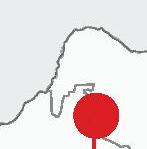
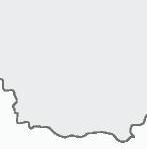
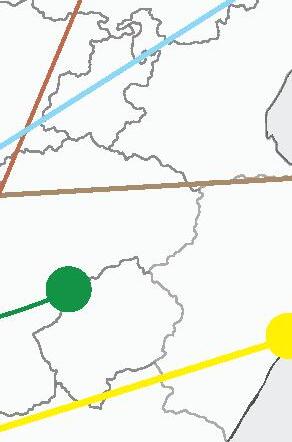


Public consultations and formal investigations will commence from July to September 2023. Members of the public in a ected areas are encouraged to participate actively in the meetings to air their views.
For
@
IMAGE: SUPPLIED
Scan this QR code to go directly to the Municipal Demarcation Board website.
municipal demarcation board
342 2481
cialMDB1
more information: 012
www.demarcation.org.za Demarcationboardmdb Of
Municipal Demarcation
Municipal Demarcation
Board @
Board
ISSUE 42 VOICE OF LOCAL GOVERNMENT 43 ADVERTORIAL | MUNICIPAL DEMARCATION BOARD
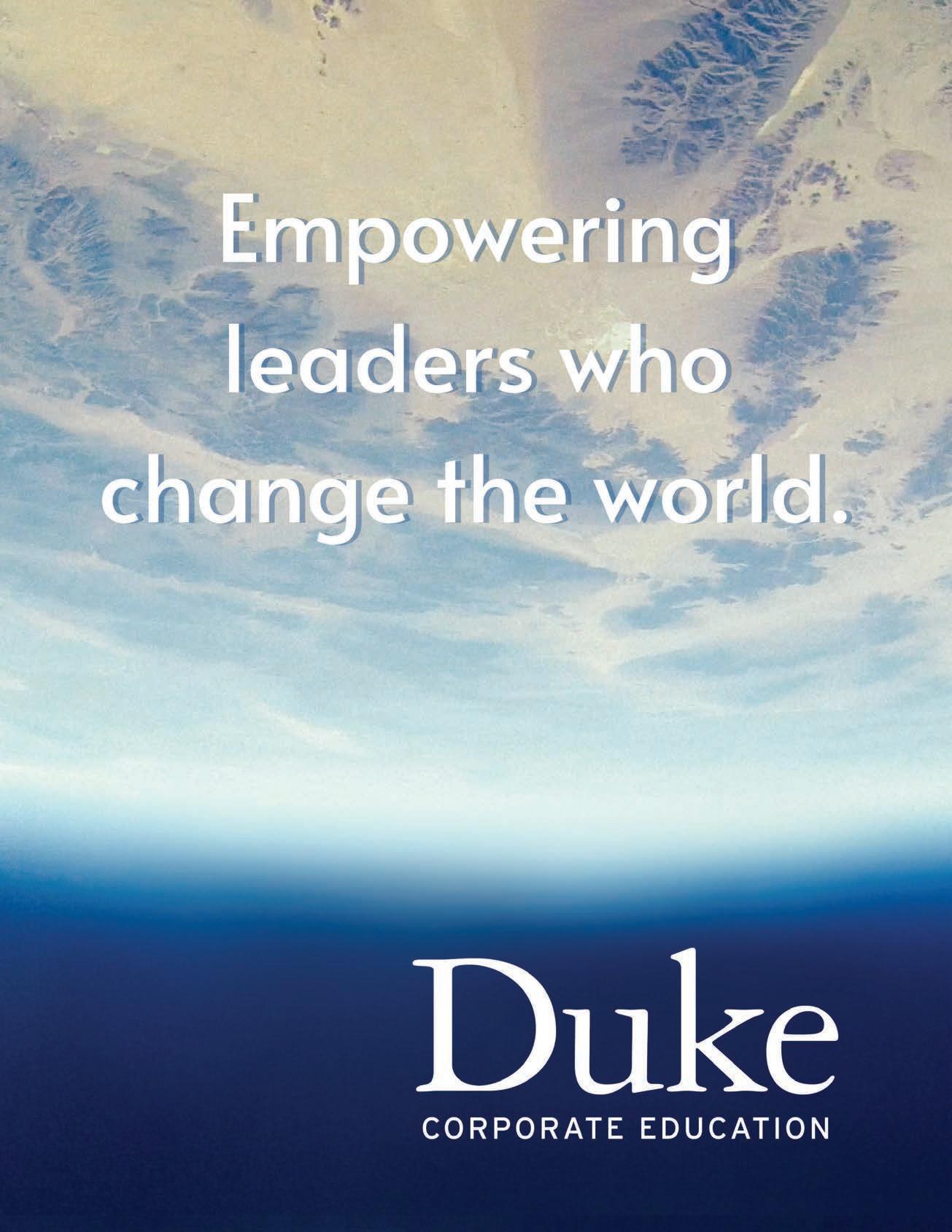
PROFILE: THE DEVELOPMENT BANK OF SOUTH AFRICA
According to the South African Constitution Act No. 108 of 1996, the duties of municipalities are to “structure and manage its administration and budgeting and planning processes to give priority to the basic needs of the community. And, to promote the social and economic development of the community”. The duties also include participating in national and provincial development programmes that play a key role in economic growth.
THE EFFECTS OF POOR SERVICE DELIVERY
Poor service delivery and general poor government services lead to the decline of resources, zero job opportunities, job losses and overall poor living conditions. However, the service delivery issues in South Africa begin with the lack of adequate infrastructure.
This refers to the fundamental systems and facilities needed to connect to the supply chain necessary for economic activity and function. Poor service delivery in municipalities is caused by numerous factors, for instance, municipalities are not financially self-sufficient and lack the necessary infrastructure and resources to carry out their duties to the larger public.
THE DEVELOPMENT BANK OF SOUTH AFRICA’S CONTRIBUTION TO MUNICIPALITIES
Our role includes providing under-resourced municipalities with service management, infrastructure development and infrastructure budget financing.
YOUR MUNICIPALITY AT WORK
INSIDE: 46 CITY CLEAN-UPS AND ENTREPRENEURSHIP
47 ROSSLYN IMPROVEMENT DISTRICT
48 SALGA’S MOU WITH NORTH-WEST UNIVERSTY
Under-resourced municipalities are generally municipalities that lack infrastructure plans.






If this is the case, our teams assist these municipalities through our nonlending support portfolio. We help municipalities work on appropriate infrastructure plans, such as drawing municipality budget master plans in water, sanitation, electricity, roads and stormwater, and infrastructure investment.
We’ve come to learn that poor economic and social infrastructure delivery is due to poor planning. For example, we have identified numerous low-impact projects that are implemented but bear no significant results, leaving service delivery challenges. There are also instances where projects get implemented, but later become dysfunctional due to a lack of supporting infrastructure or poor planning.
That’s why our role is crucial from the beginning of the planning stage. We direct government funding to high priority projects through the improvement of municipal infrastructure planning. Furthermore, our infrastructure planning identifies critical projects and creates a project financing pipeline for preparation. This helps to facilitate the creation of cost-effective socioeconomic infrastructure, which boosts the municipal revenues. Once progress is made, we can improve the financial viability of beneficiary municipalities. Source: dbsa.org.za
50 SALGA’S MUNICIPAL AUDIT FEEDBACK
52 SALGA’S NATIONAL COMMUNICATORS FORUM
ISS U E 42 VOICE OF LOCAL GOVERNMENT 45
Ntabankulu mayor leads clean-up campaign
DALE HES unpacks how Ntabankulu municipality is cleaning up the community
Local municipalities are obligated to keep their jurisdictions clean and to tackle illegal dumping problems. In this spirit and in line with government’s Good Green Deeds initiative, Tsileng Sobuthongo, executive mayor of the Ntabankulu local municipality in the Eastern Cape, rolled up her sleeves to lead a clean-up campaign in the municipal seat of Tabankulu.
The mayor and municipal staff were joined by officials from the National Department of Forestry, Fisheries and the Environment and the Eastern Cape Department of Economic Development, Environmental Affairs and Tourism (DEDEAT), and members of the Ntabankulu Taxi Association to clean rubbish from the town centre.
The town has registered consistent improvements in cleanliness over the past few years, as highlighted during Sobuthongo’s interactions with taxi industry members.
“Ntabankulu Local Municipality has put extra effort into ensuring that Tabankulu is a town of choice and a clean environment is non-negotiable,” says Sobuthongo.
CLEAN, GREEN, SAFE AND FULL OF POTENTIAL
DEDEAT regional director Mzukisi Mboto says that such clean-up campaigns remind stakeholders that the pursuit of a clean environment is the shared responsibility of all spheres of government and particularly communities.
“A clean environment will make a significant contribution towards promoting economic growth, poverty eradication and tourism development. A clean healthy environment attracts
tourists and investors and can be a source of income through waste recycling businesses,” says Mboto. During the launch of the Good Green Deeds campaign in 2019, President Cyril Ramaphosa called on citizens, businesses, industry, labour and civil society to perform one Good Green Deed a day, such as recycling waste or conducting clean-up activities. The Good Green Deeds campaign seeks to change people’s attitudes and behaviours towards responsible management of waste and keeping their neighbourhoods clean, green and safe.
“As citizens of South Africa, we want to raise the level of consciousness that we want to live in a clean environment. We must want to live in clean cities because when we do, we are then able to have the litter properly packaged and that creates jobs, companies and an industry,” Ramaphosa said.
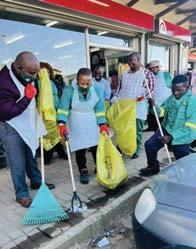
The Tshwane Virtual Entrepreneurship Academy provides free world-class courses through a virtual platform, mainly targeting young entrepreneurs, aspirant entrepreneurs and retrenched workers.
The academy offers a selection of free online courses, including a “14-day Startup Challenge”, to help empower those interested in running or growing their businesses.
“The Tshwane Entrepreneurship Academy is an initiative to bring know-how to thousands of people to empower them with the tools and skills to achieve what they want in business,” explains City of Tshwane mayor Cilliers Brink.
The training material, provided by experts and seasoned business owners, covers starting a business, finding clients, lowering costs and increasing profits, demystifying digital tools and outlining the entrepreneurship life cycle.
Hannes Coetzee, the city’s member of the mayoral committee for economic development and spatial planning, says considering the current high unemployment rate in the country, particularly among young people, the academy presents a useful empowerment opportunity.
“Young individuals wanting to start or grow their businesses are encouraged to take advantage by enrolling in one of the courses offered on this platform. With just
a smartphone and an internet connection, you can sign up and study at no cost from the convenience of your home,” says Coetzee, adding that the initiative speaks to the coalition government’s commitment to supporting small businesses.
The StartUp Tribe has partnered with large organisations, communities, municipalities, cities and chambers of commerce to establish virtual training academies – free of charge – in 83 countries around the world.
In 2020, the organisation partnered with the Modimolle-Mookgophong Local Municipality in Limpopo to establish a virtual entrepreneurship academy serving the municipality’s 600 000 residents.
“We decided that this would be the best way to support entrepreneurs. It’s the government’s job to create an enabling environment for businesses to thrive. Partnering with the StartUp tribe has enabled me to make an enormous impact on my community,” says Modimolle-Mookgophong mayor Marlene van Staden.
IMAGE: SUPPLIED
The City of Tshwane has ramped up its support to aspiring entrepreneurs with the establishment of a virtual entrepreneurship academy in partnership with global entrepreneurship experts the StartUp Tribe. By DALE HES
46 VOICE OF LOCAL GOVERNMENT I SSUE 42 SERVICE DELIVERY
Tshwane steps up
Rosslyn Improvement District set to revitalise region
One of the City of Tshwane’s most important industrial hubs has taken a further leap forward with the official launch of the Rosslyn Improvement District project by executive mayor Cilliers Brink, reports DALE HES

The Rosslyn industrial area is home to an automotive hub with manufacturing facilities run by the likes of BMW, Nissan and TATA. More than 200 businesses operate from Rosslyn, employing more than 20 000 workers.
The recently launched Rosslyn Improvement District (RID) project will see the area enhanced through environmental and beautification projects, bolstered safety and security, improved technical infrastructure, energy security and roads, community engagement and development, and business support.
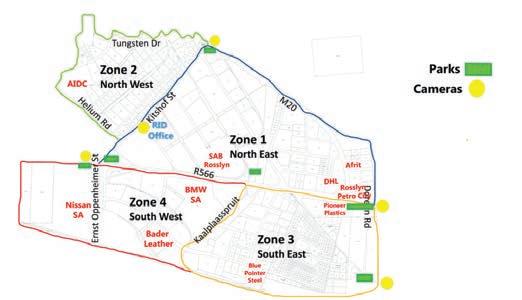
“Recent high-level engagements emphasised the importance of developing Rosslyn as a world-class industrial hub that will be attractive to existing and new investors. Rosslyn is visited regularly by international colleagues from Germany and Japan and competes with other international industrial hubs for the allocation of new automotive developments,” says RID CEO Fanie du Plessis.
The Capital City Business Chamber (CCBC) took the initiative of establishing a City Improvement District (CID) for Rosslyn, as formalised within the City’s Internal Municipal Service District ByLaw.
“The establishment of CIDs is acknowledged as one of the key mechanisms to revitalise specific economic nodes within cities,” Du Plessis explains.
FACELIFT FOR THE REGION
The environmental and beautification aspects of the project, under the slogan “Proudly Rosslyn” include weekly grass cutting and cleaning of roads and main entrances, along with community clean-up initiatives, painting of robots and road signs and installation of dust bins.
ENHANCED SAFETY AND SECURITY
Safety and security initiatives include enhanced rapid response from security
firms, a strengthened law enforcement presence, critical infrastructure protection, such as substations and cables, 24-hour CCTV surveillance and direct access to the RID Satellite Office for RID members.
The Tshwane Metro Police Department has committed 16 officers to the RID satellite office. They will use motorbikes to respond swiftly to any reported incidents and increase police visibility.
INFRASTRUCTURE IMPROVEMENTS
The RID will develop a stabilised approach to the upgrading and maintenance of roads, water and electrical infrastructure. Technical task teams, inclusive of local business representatives, will also be established to assist the City with critical upgrades and maintenance. The RID also aims to protect against energy instability by embarking on various renewable energy initiatives, in line with the goal of establishing an eco-industrial park model.
COMMUNITY AND BUSINESS SUPPORT
The RID will apply the Asset-based Community Development Programme initiated by the Department of Cooperative Governance and Traditional Affairs, which seeks to involve communities in projects in their areas.
Various CSI projects will also be initiated, while a combined community portal will be established to provide a platform for job opportunities and co-ordinate projects and training sessions.
Businesses in the RID will be supported through networking sessions and the provision of a comprehensive business profile of all RID members on the CCBC website.
A MODEL TO FOLLOW
This is the second CID to be established in Tshwane, following the Hatfield CID.
“With the Rosslyn Improvement District and Hatfield CID now firmly established, I believe we can roll out these initiatives in other parts of Tshwane. The two projects embody the much-needed and efficient co-operation between the private sector and local government that is critical to take the capital city forward,” says the City’s community safety member of the mayoral committee Grandi Theunissen.
The Rosslyn development is also in line with the outcomes emerging from a National Industrial Parks Summit held at the CSIR in Pretoria in April. The summit revealed that the main challenges faced by industrial parks were vandalism, insufficient provision of basic services, availability of infrastructure and governance problems.
The Department of Trade, Industry and Competition (dtic) subsequently announced the development of a new national industrial parks implementation framework to support the revitalisation of industrial parks across all spheres of government.
“Some critical measures needed to revitalise the parks include integrating eco-industrial development, resilience approaches, stewardship and fourth industrial revolution modalities designed to improve business operations and provide a more attractive environment for investment,” says dtic director of regional industrial development Thami Klaasen.
IMAGE: SUPPLIED
A map of the Rosslyn Improvement District. Source: RID
I SSUE 42 VOICE OF LOCAL GOVERNMENT 47 SERVICE DELIVERY
Tshwane mayor Cilliers Brink
Capacity building bolstered through partnership
SALGA’s recent signing of a Memorandum of Understanding with North-West University will help to further strengthen the capacity of local government employees and boost institutional capacity on several levels.
 By DALE HES
By DALE HES
AMemorandum of Understanding (MoU), signed in May, will see SALGA and North-West University (NWU) partnering in selected areas of research, local government capacity building and development. A working committee, comprising officials from both sides, will be established for the implementation of the MoU, which will be facilitated under the auspices of the SALGA Centre for Leadership and Governance.
“The MoU aims to create a co-operative and collaborative framework in the selected areas to increase institutional capacity. SALGA hopes to collaborate with NWU in the various capacity-building programmes convened by the SALGA Centre for Leadership and Governance, such as facilitated leadership conversations, executive coaching and training sessions,” says Rio Nolutshungu, SALGA’s chief officer of municipal capabilities and governance.
“The MoU further intends to leverage the partnership to strengthen evidence-based decision-making for the sector through research collaborations that tackle the fundamental persisting issues within our local government sphere,” Nolutshungu adds.
Professor Costa Hofisi, research director of Afrocentric governance of public affairs at NWU, said that the scope of the MoU includes collaborations in capacity building, knowledge sharing, thought leadership, best practices and innovations.
“Collaboration will be in the faculties that link with the mandate of SALGA, such as the economic and management sciences, education, engineering, humanities, law, health sciences and natural and agricultural sciences,” Prof Hofisi explains.
Work will also include the facilitation of field research work for post-graduate students pursuing and involved in local government studies, conducting peer reviews for SALGA research outputs to ensure credibility, and collaborating in public lecture programmes and symposiums on issues affecting local government.
Prof Hofisi says the partnership was particularly important in improving the functions of local governance in the North West, where municipalities have been challenged by service delivery and governance issues. In the Auditor-General’s latest report (2021/2022), none of the North West local municipalities received a clean audit.
“Local government is a vehicle for service delivery therefore it is important to develop its capacity for the sector to deliver its mandate. The failure of local government may also lead to social, political and economic instability, meaning that the improvement of services will likely result in stability on those fronts,” Prof Hofisi points out.
MULTIPRONGED APPROACH
Nolutshungu says that SALGA’s approach to capacity building and training is multidisciplinary and comprises various partners, including institutions of higher learning.
“The skills, resources and capacity of higher learning institutions create public value, which SALGA leverages in the interest of its members. Through these collaborations, SALGA can widen the learning opportunities accessible to municipalities and ensure that their skills capacity is informed by accredited learning programmes,” he explains.
Nolutshungu notes the importance of ensuring the long-term sustainability of such projects. “We understand that the long-term sustainability of the MoU is embedded in the impact of this partnership and the value-add it brings to SALGA’s members. In addition to this, the joint steering committee will work to ensure that the joint activities are well co-ordinated and governed for an impactful relationship.”
CONTINUED FOCUS ON PARTNERSHIPS
In the 2021/22 financial year, more than 7 400 municipal officials and councillors benefitted from SALGA’s ongoing development and capacity-building programmes. Nolutshungu emphasised the necessity of partnerships in fulfilling the organisation’s mandate. “The local government sector affects every citizen and solutions can be found in various corners of our society, so it is our duty to work with those partners who have a shared commitment to the transformation of local government for the benefit of South African communities,” he explains.
Some of SALGA’s capacity-building programmes carried out in partnership with local municipalities and other institutions include the councillor induction programme, the high-impact leadership development programme, the municipal human resources capability optimisation programme and the municipal audit support programme.
“As an autonomous association of municipalities and the mandated voice of local government, it is our ongoing effort to ensure that we partner with other stakeholders whose strengths can enhance the work of SALGA,” Nolutshungu concludes.
IMAGE: SUPPLIED
The MoU will see SALGA and North-West University collaborating in several areas.
48 VOICE OF LOCAL GOVERNMENT I SSUE 42 SALGA IN ACTION

The South African Government Association (SALGA) notes that the 2021/2022 Auditor-General of South Africa’s (AGSA) Municipal Financial Management Act (MFMA) audit outcomes indicate that 142 municipalities, representing 55 per cent of all municipalities, provided credible financial statements and received clean and unqualified audits in the 2021/2022 financial year. These municipalities were responsible for more than R351-billion, or 66 per cent of the overall local government budget of R530-billion. Put simply, this means that for every R100.00 under the management of local government, local government has produced trustworthy financial statements for R66.00 of this R100.00.
Furthermore, SALGA calls on the 45 per cent of municipalities that received poor audit outcomes to work hard to turn around municipal financial management and governance to reach the same outcomes that have been achieved by the majority of municipalities.

While these results represent stagnation in financial management and governance over a five-year period, it is encouraging that the municipal audit results reflect no noticeable regression in the first year of the local government term under the cohort of leadership ushered in since the November 2021 municipal elections.
However, the fact that local government could not produce credible financial statements for about a third of the finances under its control is a cause for concern.
The Municipal Finance Management Act (MFMA) audit outcomes are an important indicator of the state of municipal finances and promote transparency and accountability about municipality service delivery and finances.
RENEWED FOCUS ON ACCOUNTABILITY AND ACTION REQUIRED

SALGA welcomes the limited improvements, including the reduction in
MUNICIPAL AUDIT FEEDBACK:
No noticeable regression, but urgent change needed
SALGA calls on municipalities that received poor audit outcomes to turn around their financial management and governance and replicate the 55 per cent that achieved acceptable results
the number of municipalities that failed to submit fi nancial statements for auditing on time. SALGA has noted green shoots of improvements in the MFMA consolidated general reports, but remains deeply concerned about the lack of accountability and consequence management in dealing with breakdowns in municipal fi nancial management controls and noncompliance with MFMA regulations, as pointed out by the AGSA.
This calls for a renewed approach to enforce accountability and consequence management. A carrot and a stick approach – where excellence is rewarded, while mediocrity and maladministration are punished – is needed to turn local government around.
In respect of accountability and consequence management, SALGA calls upon municipalities to take stern action towards nonsubmission of financial statements and eliminating and recovering monies lost through irregular, fruitless and wasteful expenditure. Municipal leadership must set targets for achieving this outcome during their term of office. No previous irregular, fruitless and wasteful expenditure amount should remain unactioned at the end of the 2023/24 financial year. Equally, there must be a significant reduction and eventual elimination of irregular, fruitless and wasteful expenditure in the remaining financial years of this term. Nonsubmission or late submission of financial statements for audit purposes must be a thing of the past.
DRIVERS OF EXCELLENCE
SALGA appreciates the AGSA’s report as it highlights areas that need special attention and congratulates all the municipalities that achieved positive audit outcomes,
DID YOU KNOW?
Overstand Municipality won the “Best Municipality for 2023” at the Western Cape Government Service Excellence Awards (SEA) event held in May this year. The Best Municipality Category recognises a municipality that demonstrates commitment to citizen-centredness, service-delivery excellence and good government principles.
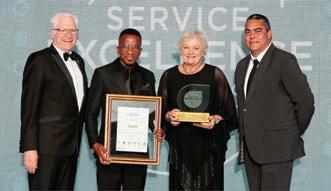
To be eligible for the prize for Best Municipality, three years of clean audit reports must be recorded.
“The Overstrand Municipality has exceeded this standard and achieved nine consecutive clean-audit reports,” a press release stated. “It has also adopted a zero-tolerance approach to good governance.” These achievements place Overstrand Municipality among the top fi ve per cent of local municipalities in South Africa to have received three or more consecutive clean audits.
Tsakalani Maluleke
Western Cape Premier Alan Winde (left) with the Overstrand executive team.
50 VOICE OF LOCAL GOVERNMENT ISSUE 42
especially those that have maintained this over time. These pockets of excellence that have consistently achieved clean audits since the 2016/17 financial year to date must be acknowledged for their exemplary work. These are the municipalities whose control systems must be studied and used to draw lessons for others to emulate.
These pockets of excellence are:
• Midvaal Local Municipality (GP).

• Okhahlamba Local Municipality (KZN).
• Cape Winelands District Municipality (WC).
• Overstrand Local Municipality (WC).
• Witzenberg Local Municipality (WC).
• Cape Agulhas Local Municipality (WC). SALGA echoes the sentiments expressed by AGSA in highlighting the positive correlation between the tone of leadership and audit outcomes. Stable leadership in key positions such as that of the municipal manager (MM) and chief financial officer (CFO) is vital for attaining positive audit outcomes.
Among the actions required are for councils to fill all vacant MM and CFO positions as a matter of urgency by employing ethical people who are technically skilled in the duties they are required to perform. Mayors and speakers must always act in the public interest, hold the administration accountable, and enforce consequence management without fear or favour.
CONSUMER DEBT THROTTLES MUNICIPALITIES
As of 31 December 2022, municipalities were owed R306-billion for services consumed. This situation affects the ability of municipalities to honour obligations to creditors such as Eskom and water boards.. SALGA reiterates its call made at its National Conference held on 2–4 March 2022 for municipalities to be consistent in implementing their credit control policies to tackle the increasing debtors’ book and the call to municipal consumers to honour their municipal bills.
The impact of the inability to collect debts has resulted in a gradual but steady
regression in the financial health of local government overall and has seen a marked deterioration in certain municipalities. The current trajectory needs to be arrested urgently, or it will result in a further deterioration of financial health and negatively impact service delivery, financial management and governance.
LOCAL GOVERNMENT FISCAL FRAMEWORK
The country’s fiscal framework perpetuates the structural factors that continue to impede or weaken municipalities in realising their constitutional mandate. For instance, municipalities are allocated a meagre 9.1 per cent of nationally raised revenue, meanwhile, they are assigned responsibilities and mandates of approximately 46 per cent of the functions outlined in the Constitution. On the other hand, their ability to raise local revenue is also severely eroded by the attitudes and actions of government institutions, such as Eskom, that refuse to support municipal credit control measures in their areas of supply and by failure to pay for rates and municipal services by government departments. This is while other spheres of government continue to make municipalities perform numerous unfunded mandates.
SALGA RESPONSE AND SUPPORT
In its report, the AGSA also focuses on performance planning, monitoring and reporting. The report indicates that an overwhelming majority of municipalities are not doing well in this respect. This is another critical area of concern for SALGA as it directly relates to service delivery by municipalities. The organisation will build on work done during its councillor induction to deepen the capacity building of mayors, members of mayoral committees, mayoral executives and chairpersons of council committees, empowering them to be more effective in their oversight roles.
The national and provincial SALGA leadership will interact more with its member municipalities to advise and support them in this regard. SALGA
FAST F ACT
Okhahlamba Local Municipality has maintained its clean audit status for eight consecutive years, a feat which SALGA says should be the aim of all municipalities.
SALGA said the municipality sustained the clean audit outcomes because of the level of commitment municipal managers and senior management showed to address the deficiencies identified by internal audit and risk units to institutionalise internal controls and to fill key positions with suitably qualified officials.
will also mobilise additional capacity to support municipalities, including experienced former councillors and mayors who left good records of leadership in the municipalities they led, to assist in the support and empowerment of councillors to effectively perform their oversight and leadership roles.
SALGA aims to assist municipalities in a multidisciplinary and multistakeholder approach focusing on four pillars or areas, namely:
• Leadership;
• Governance;
• Financial management: and
• Institutional capacity with the aim of gradually and sustainably improving the audit outcomes of municipalities over time.
SALGA reaffirms its commitment to the AGSA to continue working with it in an effort towards improving the state of financial management and governance in local government and also applauds the AGSA’s continued efforts to highlight the state of local government in managing the public purse as per MFMA prescripts and recommended improvements.
IMAGE: SUPPLIED
Stable leadership in key positions such as that of the municipal manager and chief financial o cer is vital for attainingpositive audit outcomes.
Okhahlamba Local Municipality mayor Vikizitha Richard Mlotshwa.
I SSUE 42 VOICE OF LOCAL GOVERNMENT 51 SALGA IN ACTION
Creating responsive engagement
The sixth National Communicators Forum held in Cape Town earlier this year has cemented local government’s commitment to ensuring it creates formidable and responsive strategies to communicate the work being done at local level
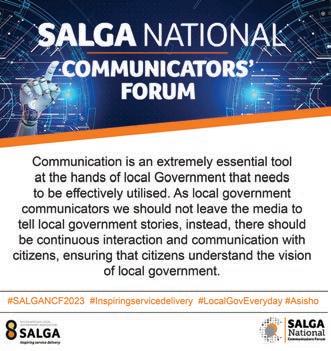
The SALGA National Communicators Forum (NCF) brought together heads of communication at municipalities, communication officials, marketers and municipal spokespersons, as well as representatives from the Department of Cooperative Governance and Traditional Affairs (CoGTA) and Government Communication and Information Systems (GCIS), among others, to deliberate and facilitate discussions on the impact of technology and how it can be better managed to complement the roll out of service delivery and improve governance systems in response to the prevailing socioeconomic challenges facing local government.
The NCF was launched in March 2017 and has been identified as an effective way to create awareness among municipal communicators about the challenges their peers face, how they respond to these challenges and the lessons learned in the process. This year, the forum comprised municipal communication representatives from SALGA’s 257 municipalities. They met around the broad topic of how digitisation is upending all industries and that local government is certainly not immune to the digital revolution. Delegates at this year’s forum shared learnings around:
• being responsive communicators;
• integrating the myriad of benefits presented by a more digital focus as it pertains to service delivery solutions and communicating these to communities;
• how to create real engagement with its citizens around the work of local government; and
• how residents can become more actively involved in creating solutions to service delivery issues.
PEER LEARNINGS
A key focus this year was understanding the challenges faced by municipalities regarding a new normal: new technologies and new communications strategies. In
the various plenary sessions, peer learning was shared around:
1. Media training. How to deal with the media. What it means to be reared. Why providing accurate and timely information is critical. How the lack of integrity when dealing with the media can harm a municipality’s image.
2. Where data is stored and new technologies. How to store, share and analyse data. How data analytics influences decisions. How to create smarter decision capabilities.
3. Case studies around:
• Why customer satisfaction surveys work (City of Joburg).
• The power of virtual communication (Ngaka Modiri Molema District Municipality).
• Defining the right content strategy; packaging content for media consumption (Buffalo City Metropolitan Municipality; Gert Sibanda District Municipality).
• Power of communication during a crisis (Ethekwini Municipality; OR Tambo District Municipality)
• Flood disaster (GCIS).
4. Digital marketing trends.
5. The power of social media as a mass communication and influencing tool.
KEY TAKEAWAYS
Why should local government build a responsive communication strategy?
Kaibe Mollo, a brand and strategy expert, shared that in this current world of constant and speedy change, universal access to global information and the potential of machine learning overtaking human learning – agility, ability and responsiveness are requirements of almost any individual and team working with people and technology.
Michael Currin, assistant director-general at GCIS, discussed the importance of strategic communication in agenda setting, saying that communication is a critical component of government’s service delivery and is increasingly recognised in international policy statements.
He explained that, since 1994, the democratic government’s mandate required that communication expand access to information to enable citizens to participate in the country’s transformation and in bettering their lives. Without information there can be no popular participation, and without popular participation there can be no lasting legitimacy or transformation of society.
The core mandate of government communication is to meet the communication and information needs of government and the public. Government communication should provide citizens with information on priorities, programmes and activities vital to government’s functioning, which underpins state-society relations.
This involves mobilising all local government’s owned and existing media channels and platforms. Technology has assisted hugely in this regard. Currin added that, within the local government space, while agility and ability is required, having informed research (smart data analytics), being factual and honest, having visible leadership, creating value with social compacting, and sharing coherent content and messaging are critical when setting agendas.
IMAGE: SUPPLIED
52 VOICE OF LOCAL GOVERNMENT I SS UE 42 SALGA IN ACTION
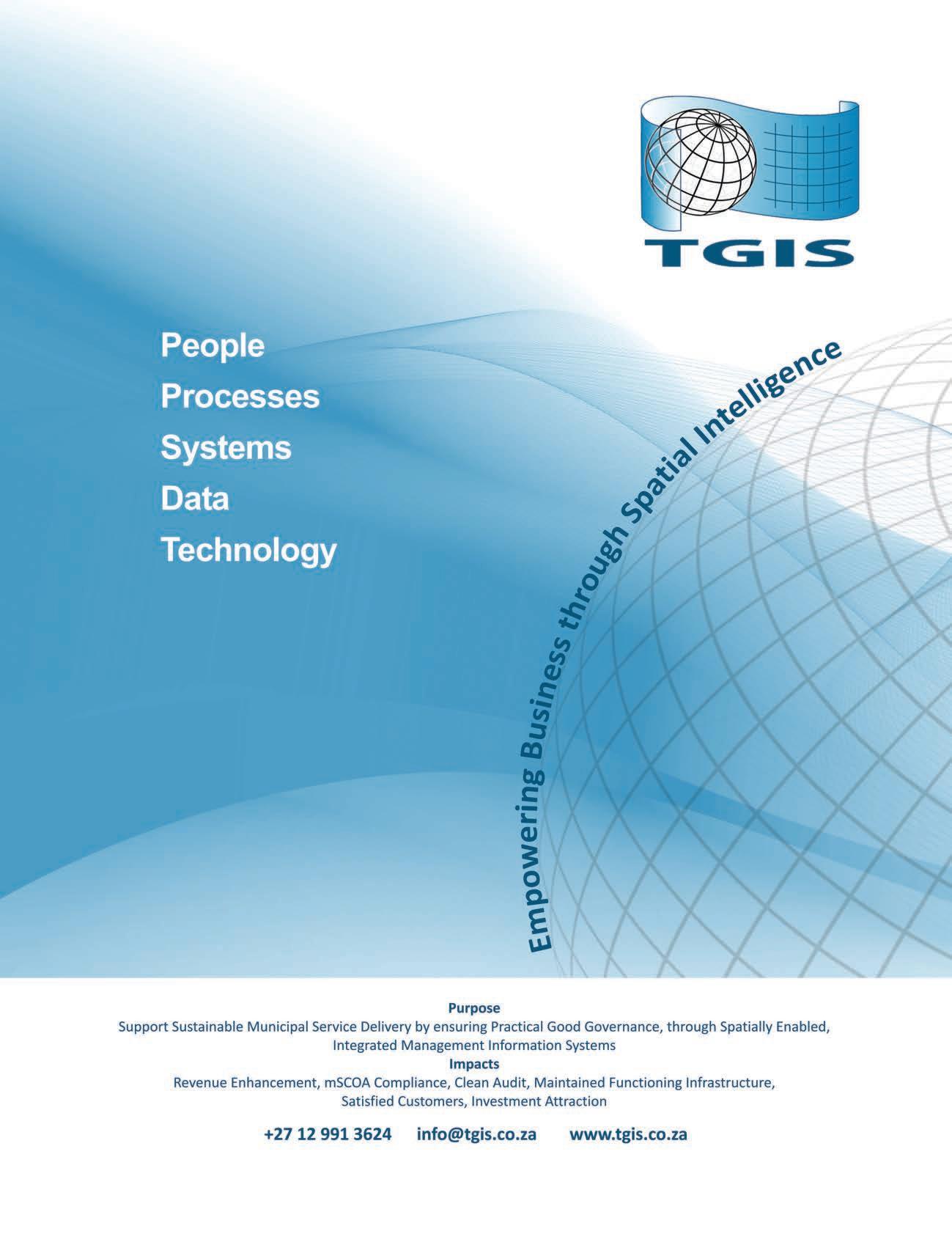
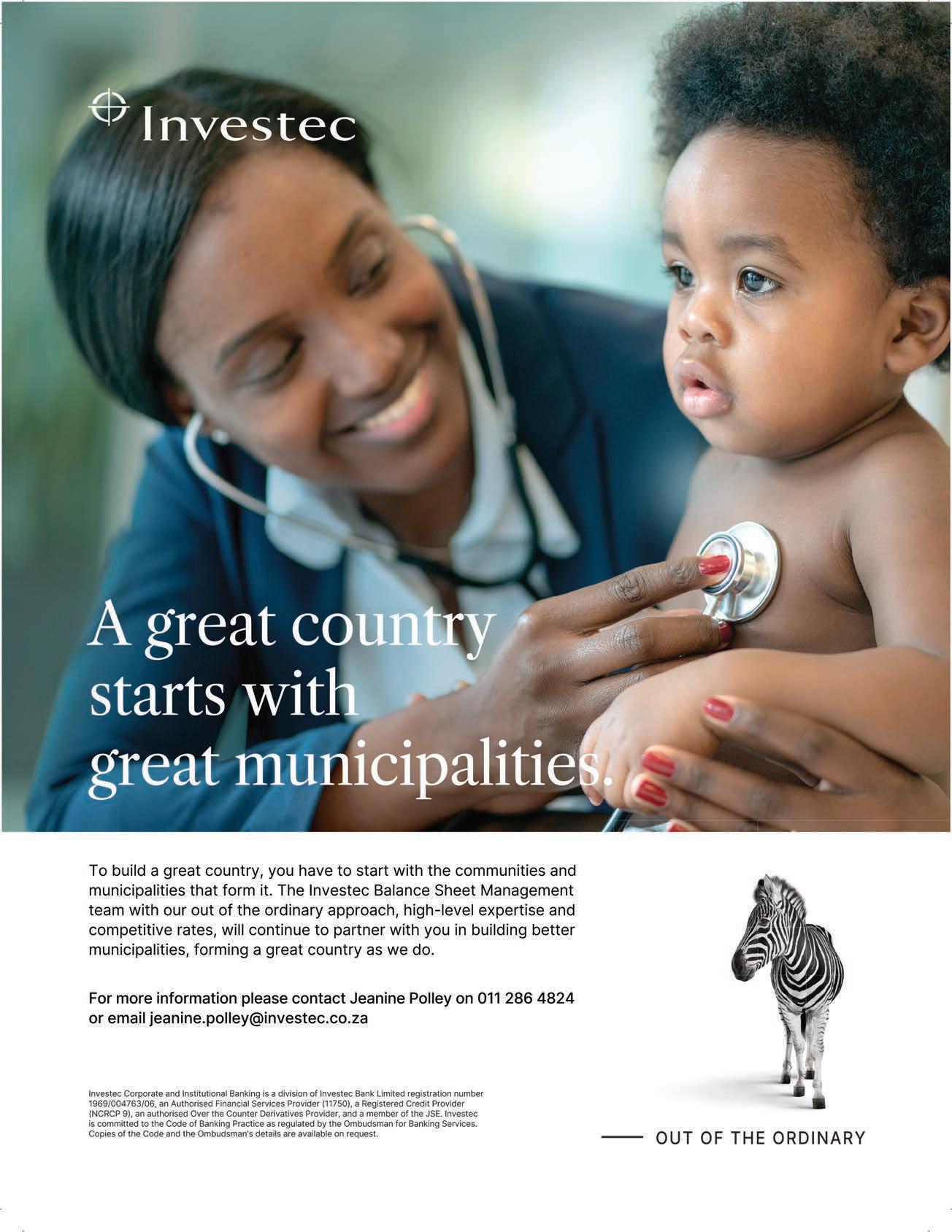
































































































 South Africa
South Africa














 Prof Thebe Medupi
Prof Thebe Medupi




 DENISE MHLANGA
DENISE MHLANGA
 – Minister Thembisile Nkadimeng
– Minister Thembisile Nkadimeng





















 By DALE HES
By DALE HES






